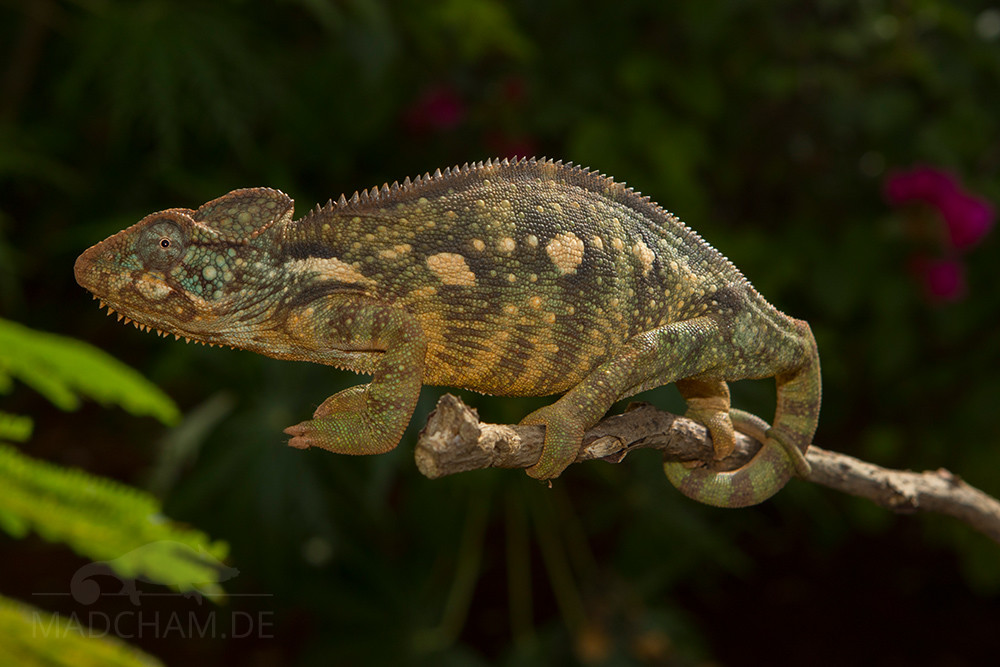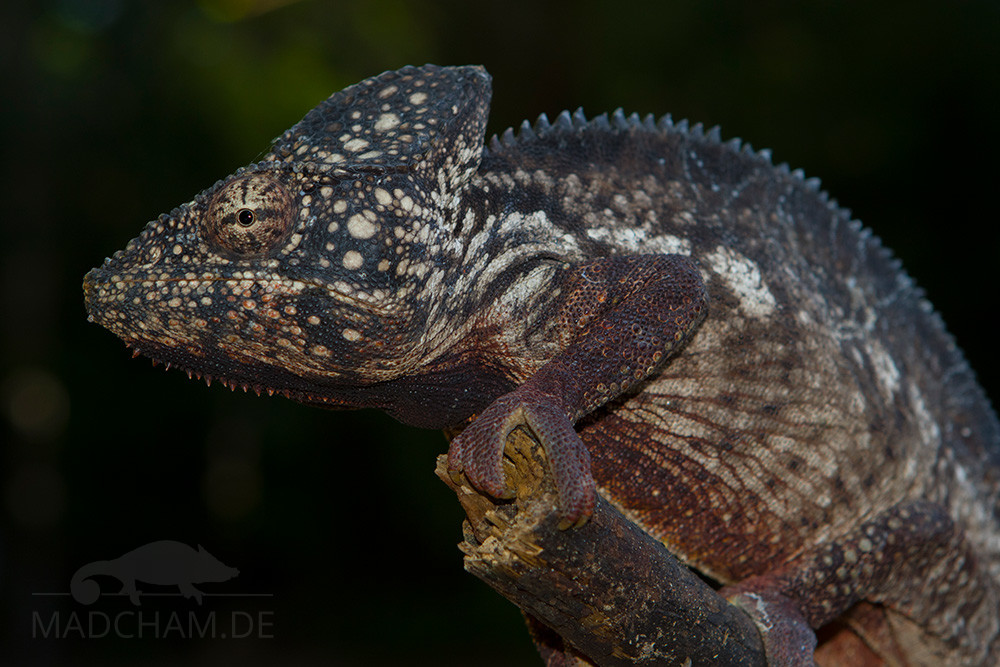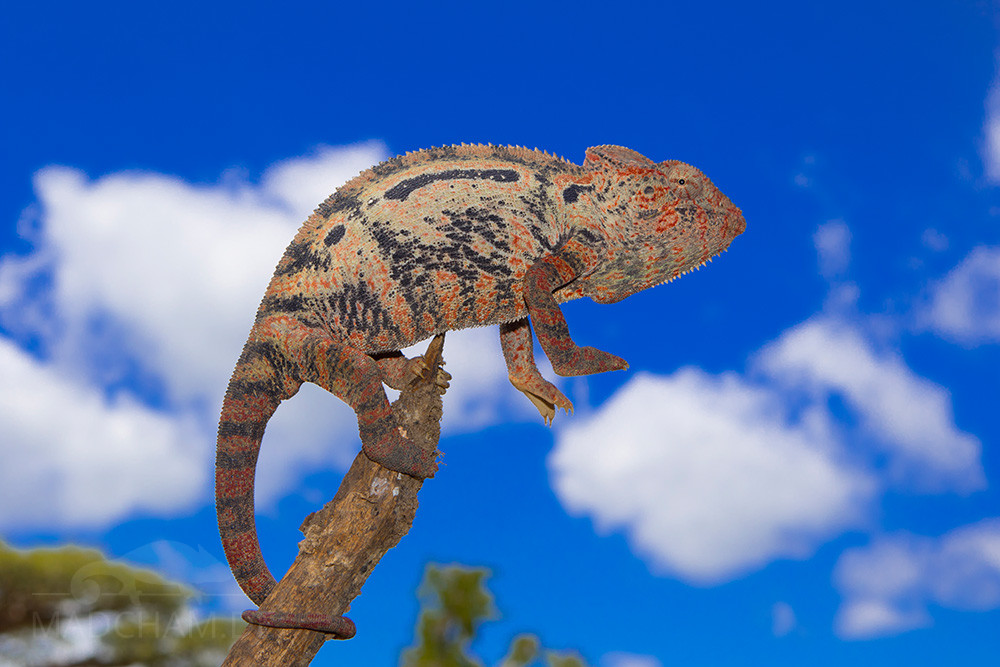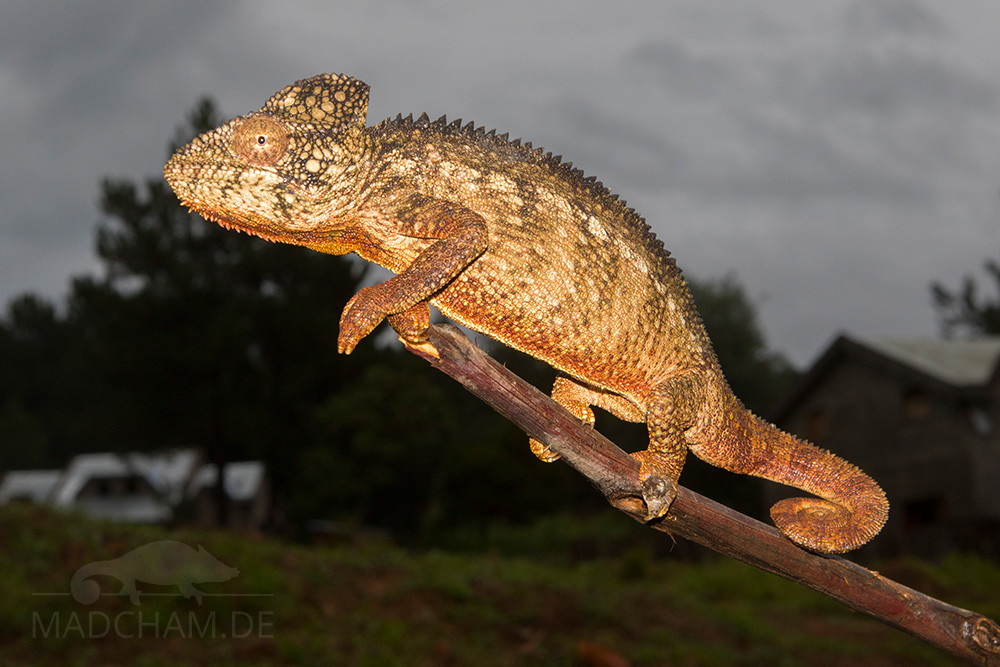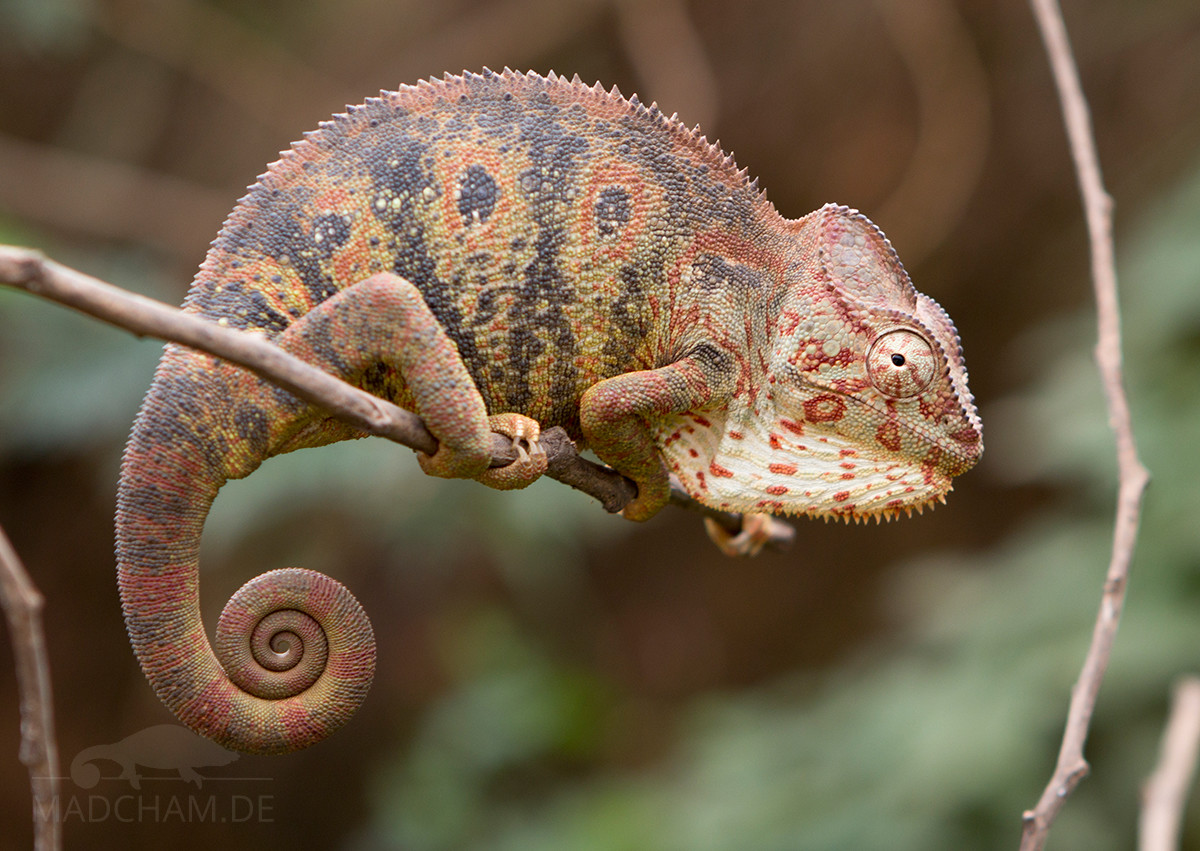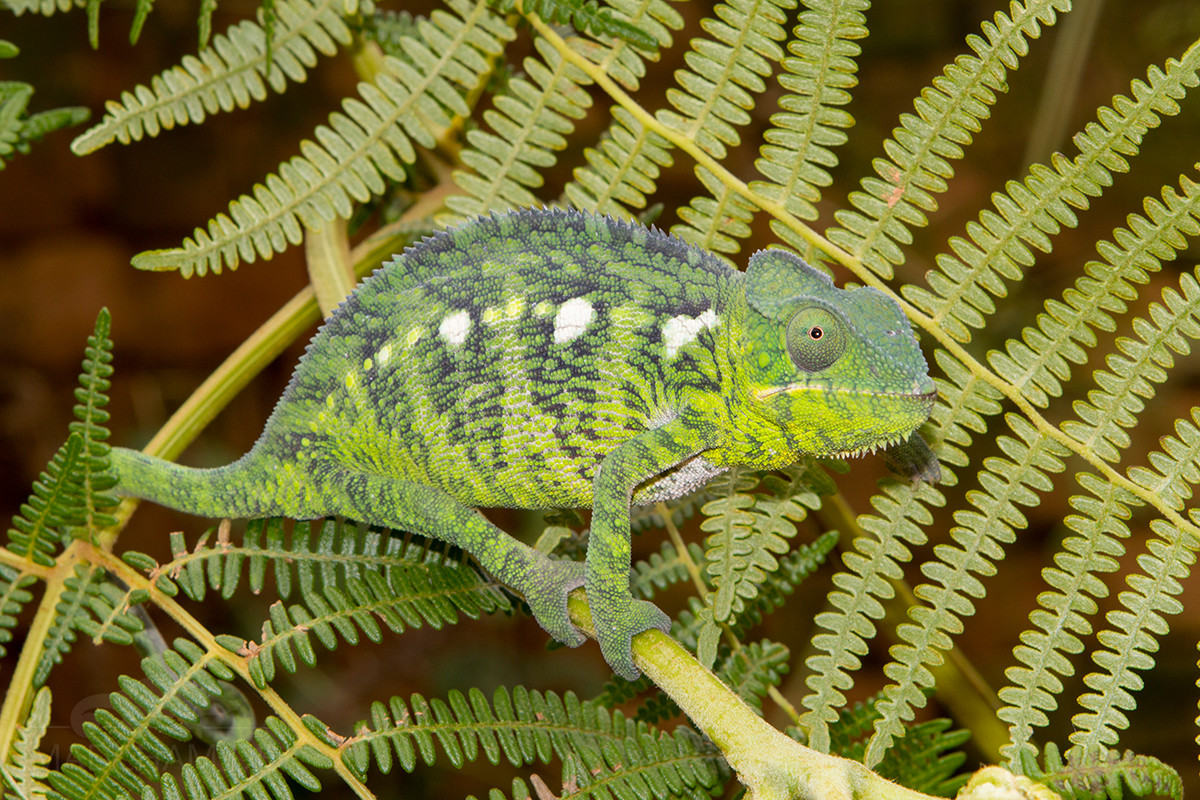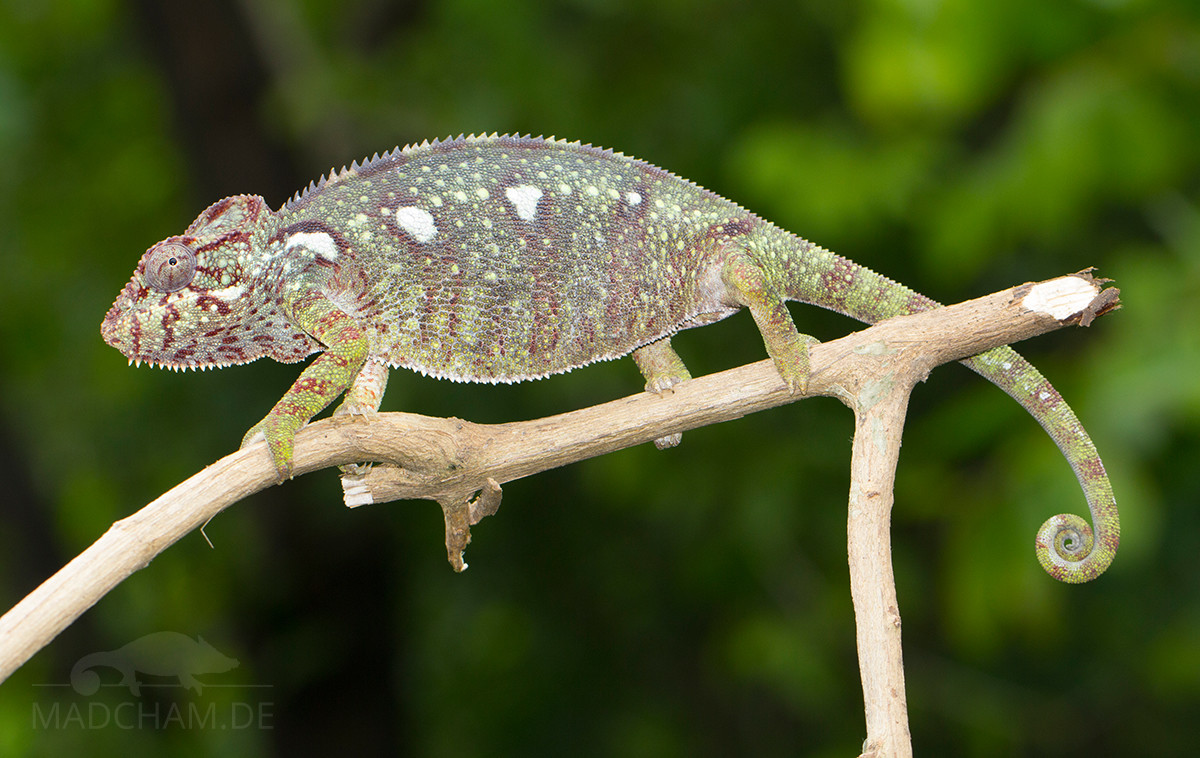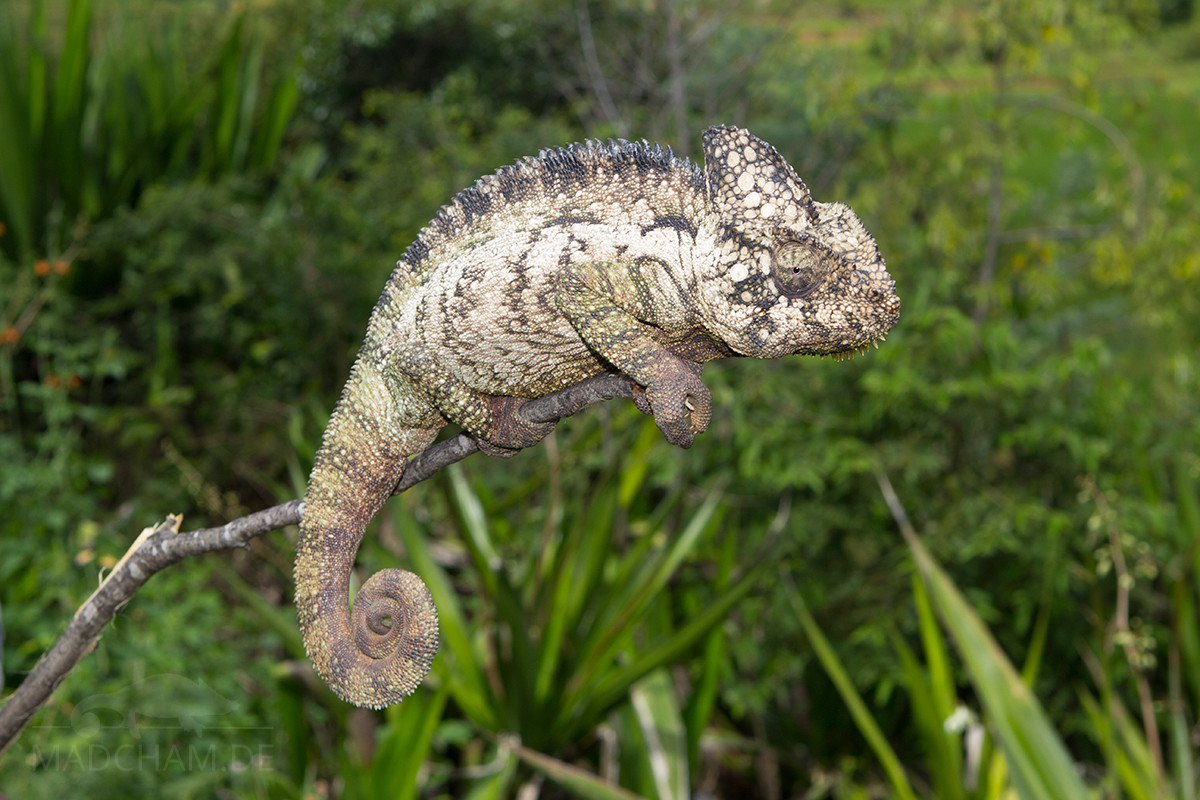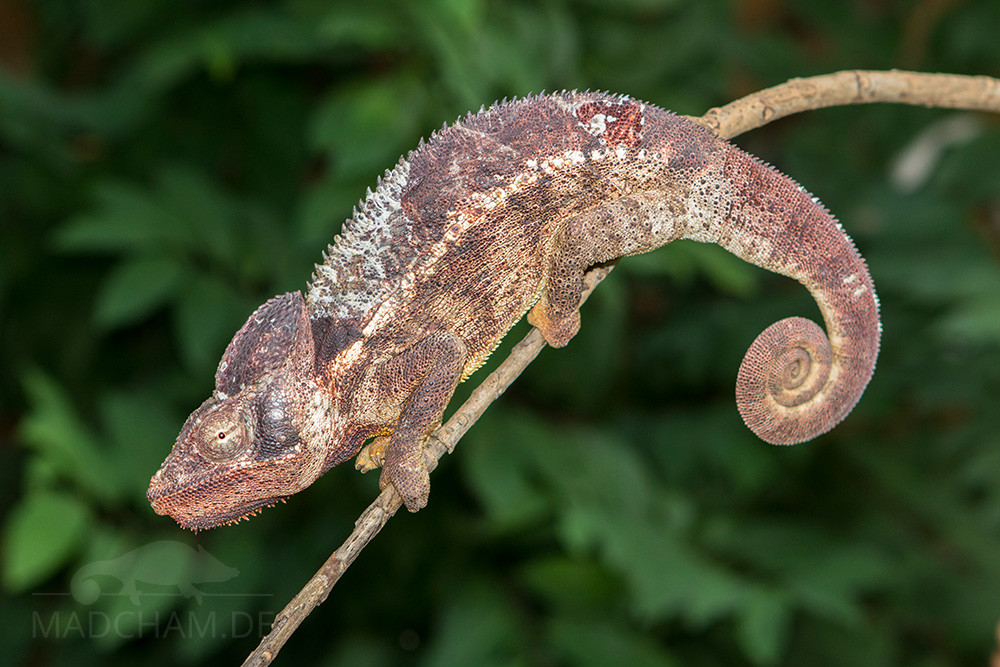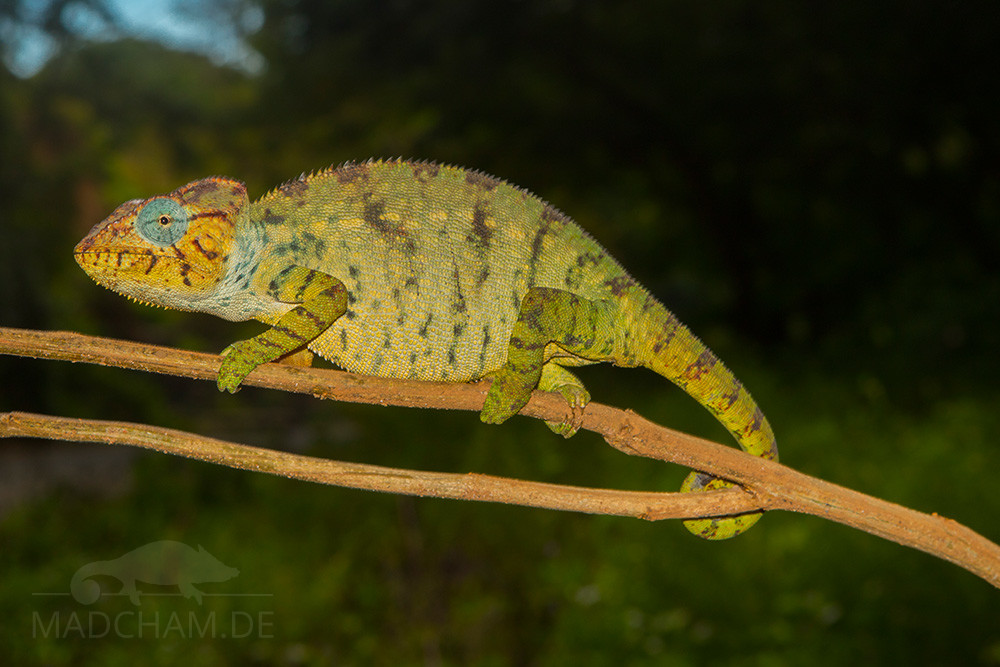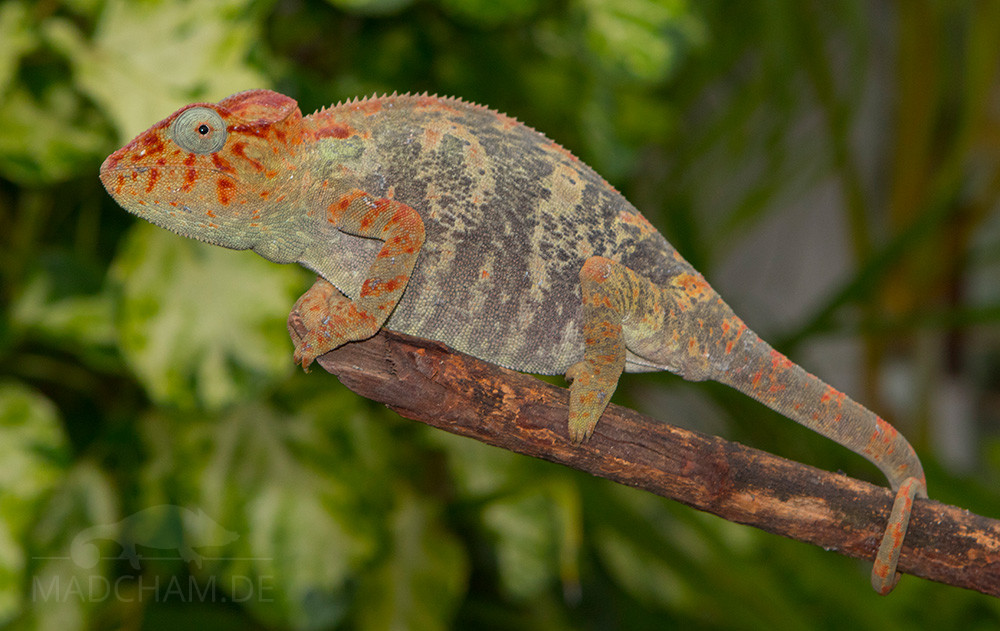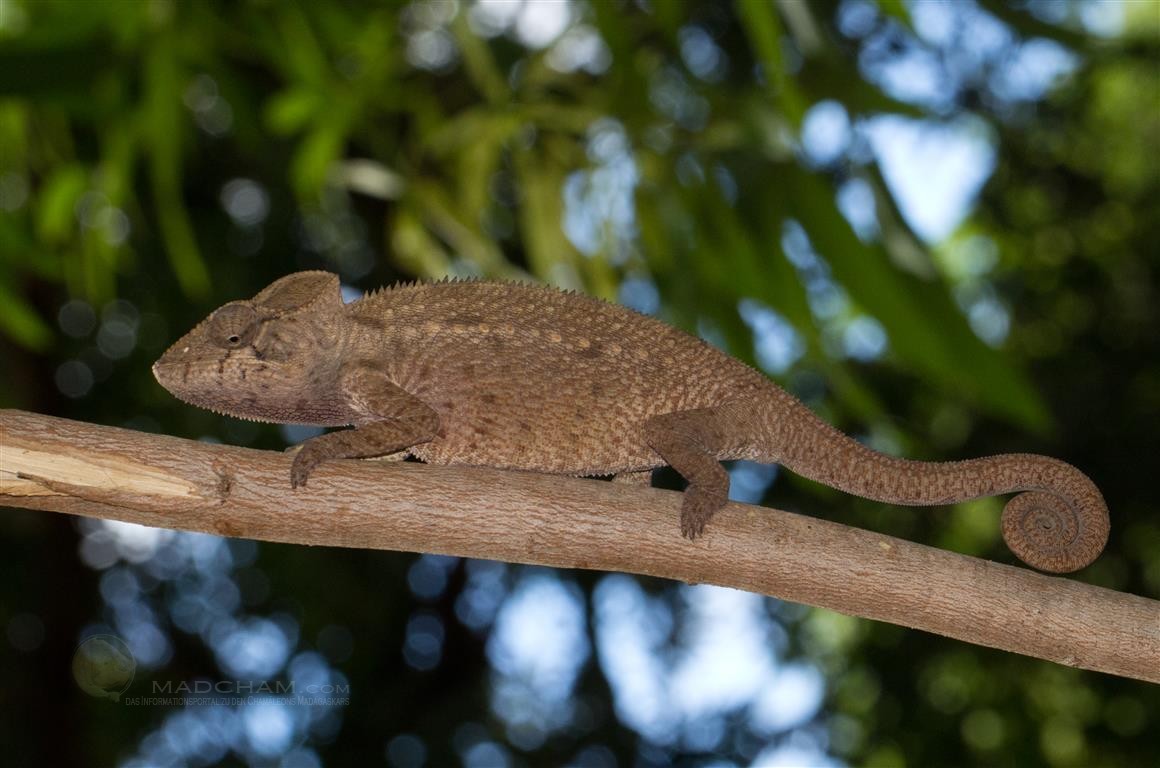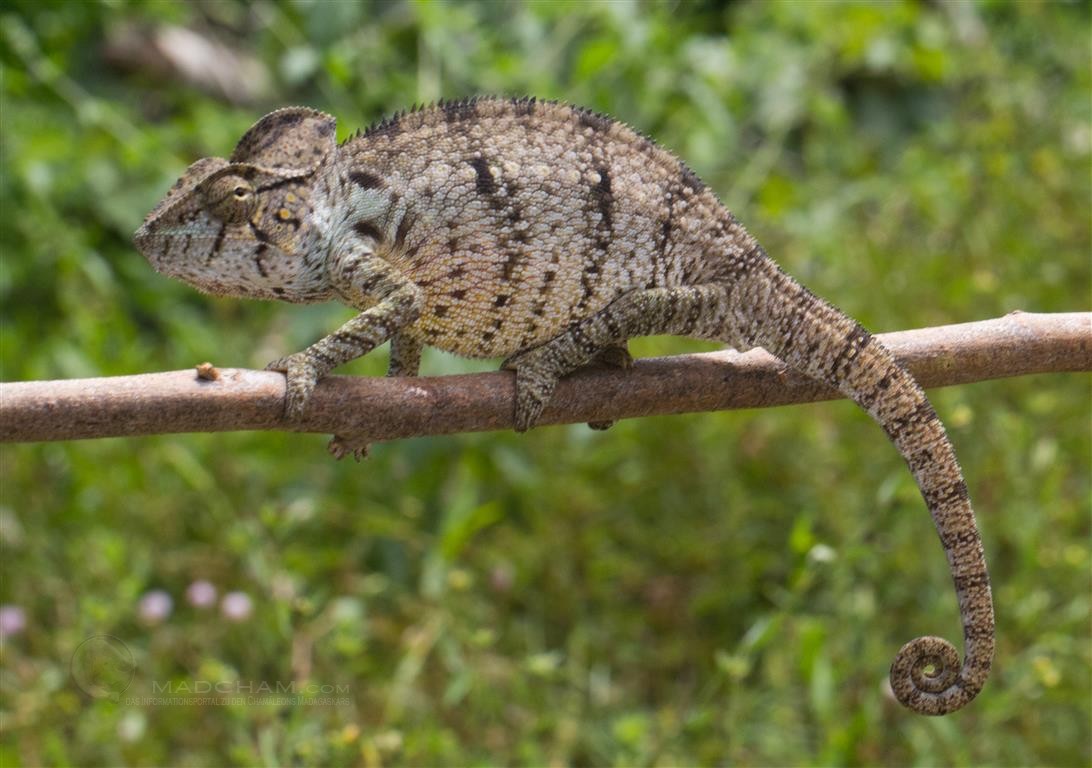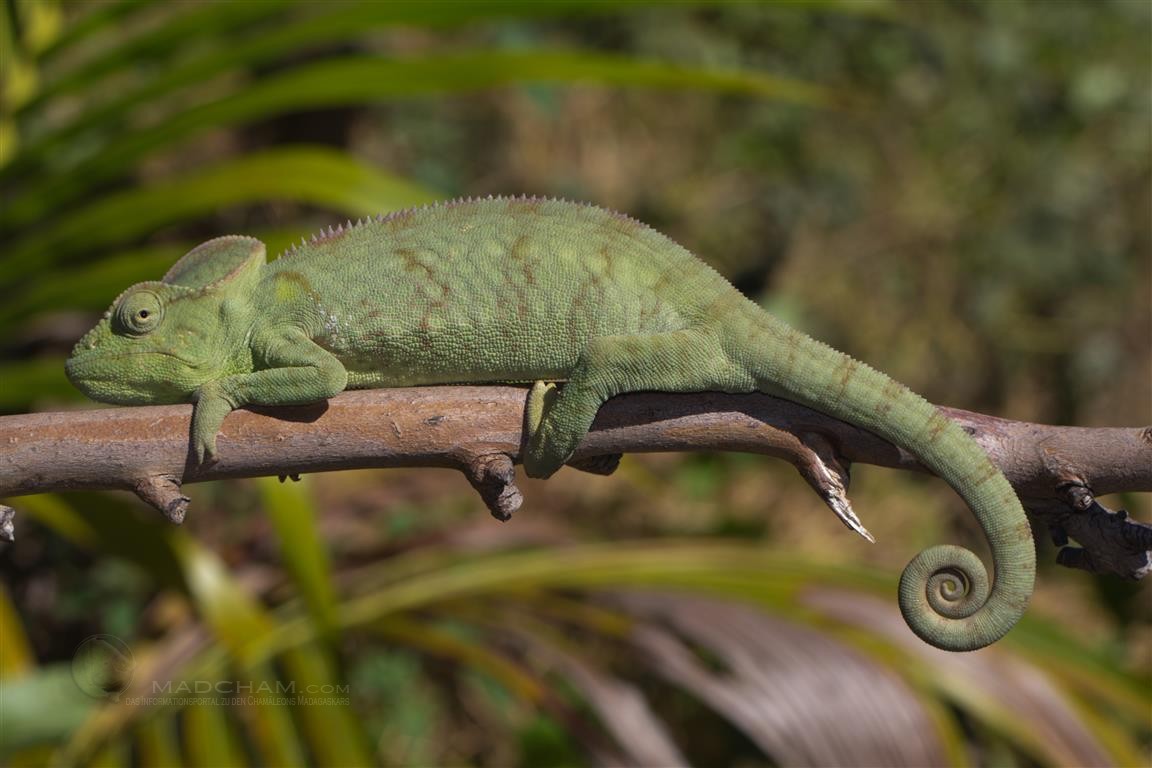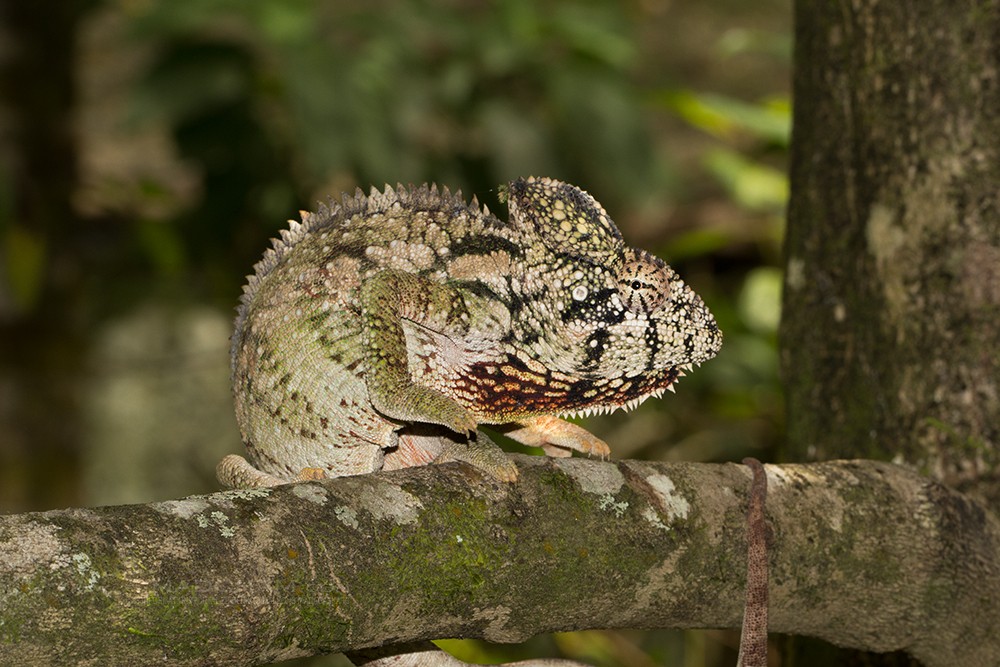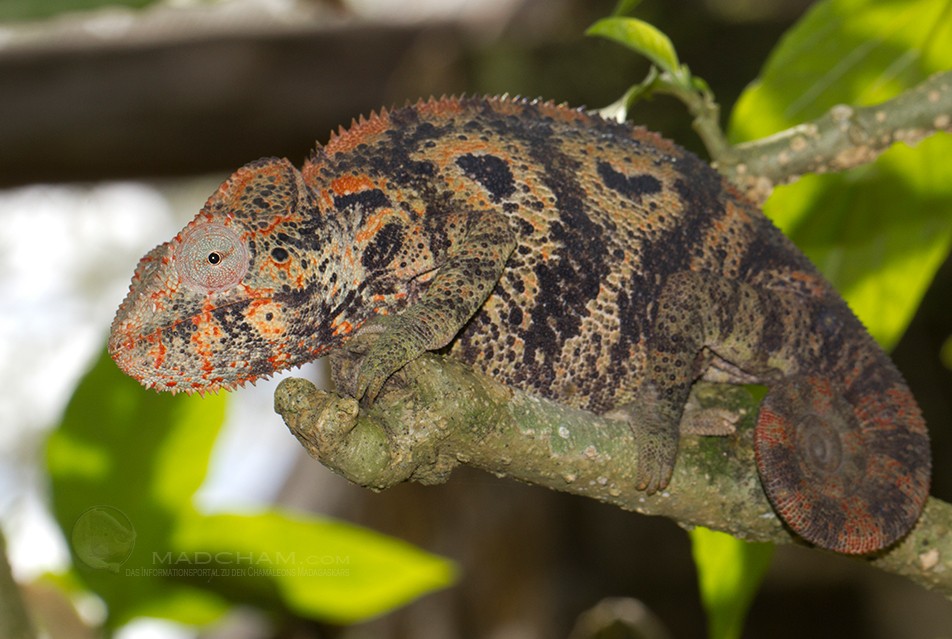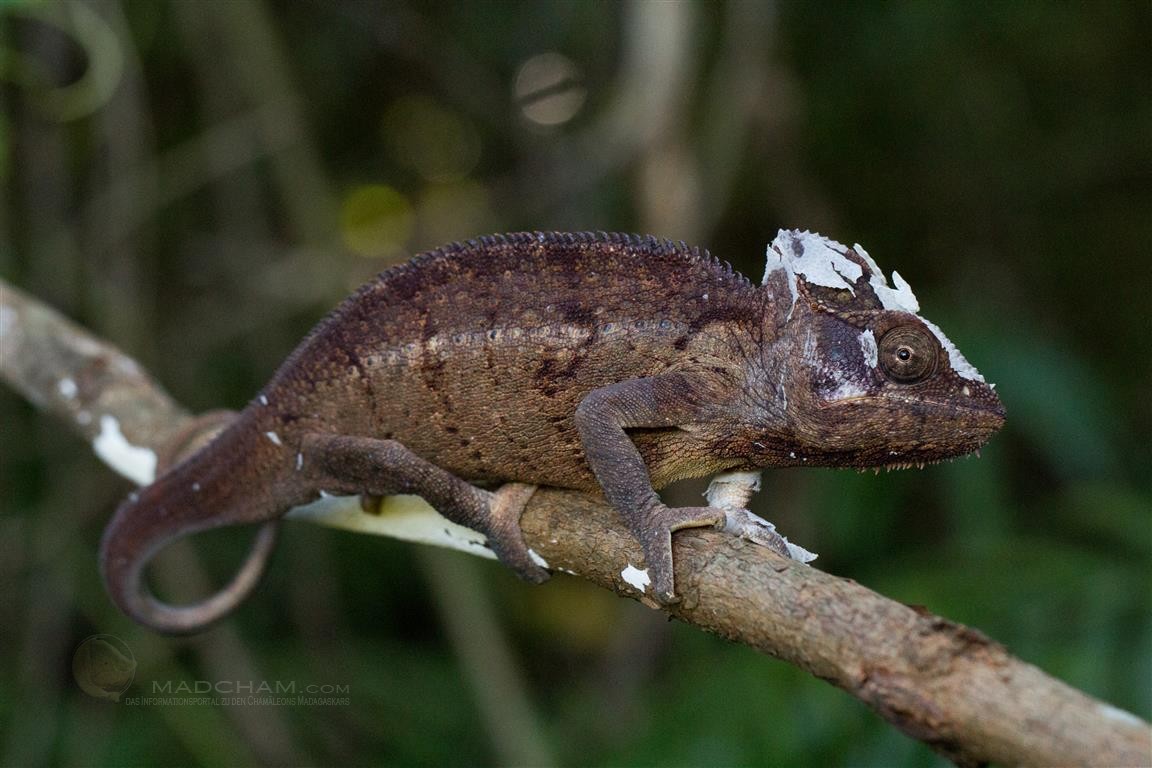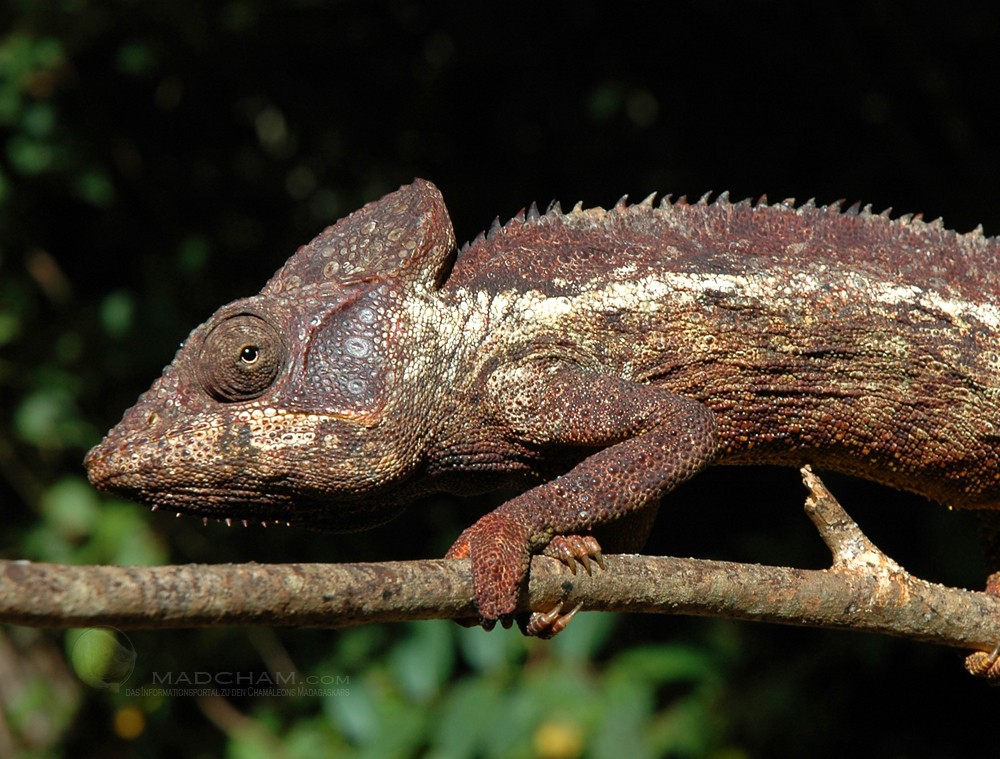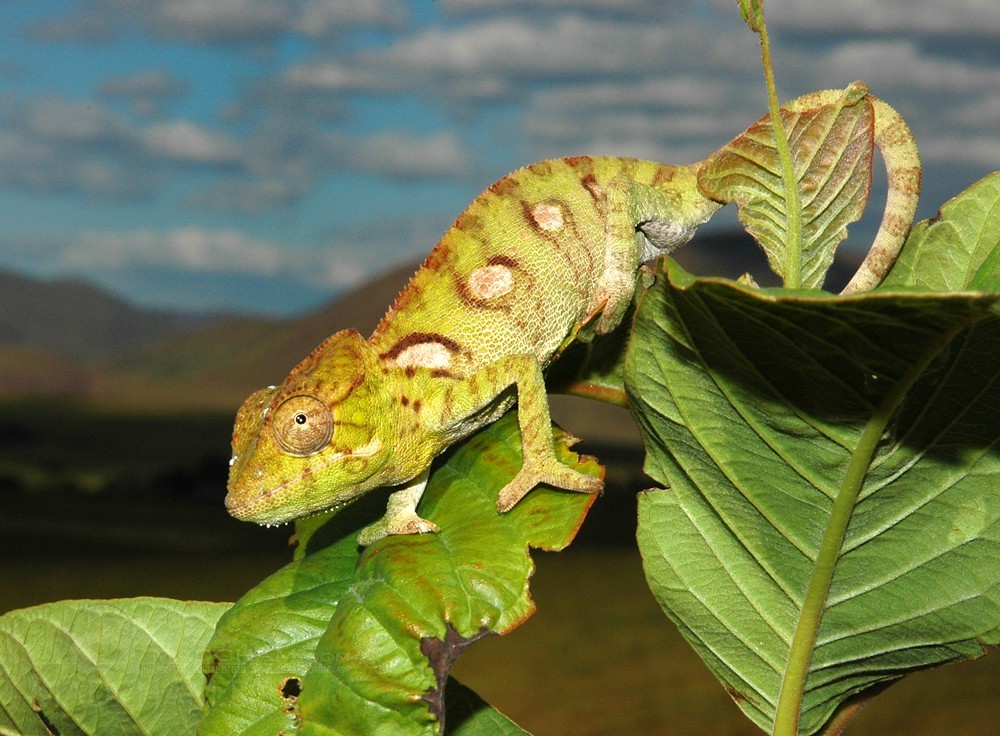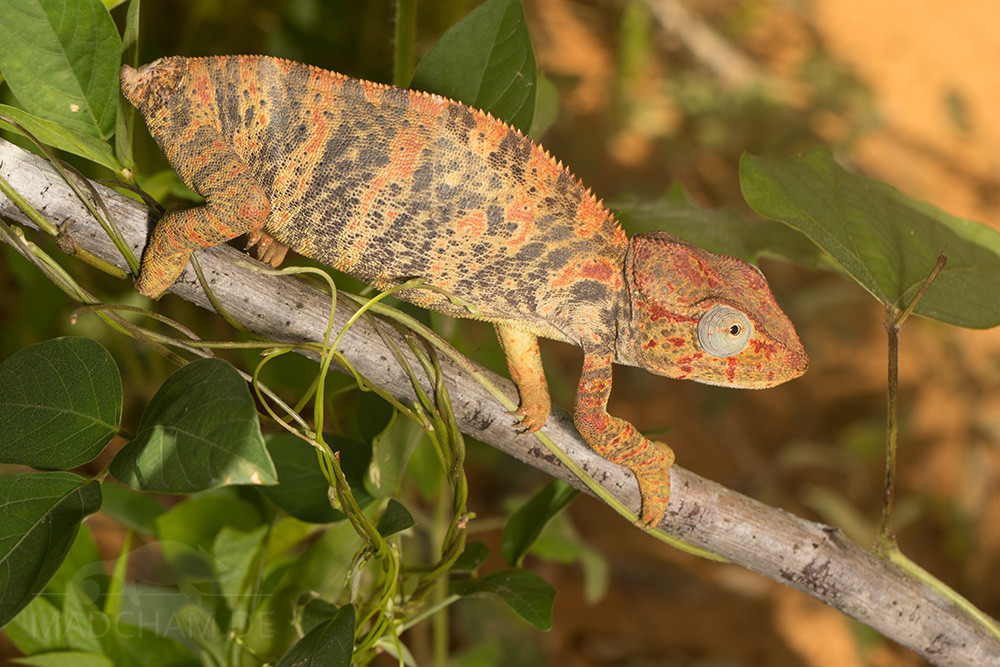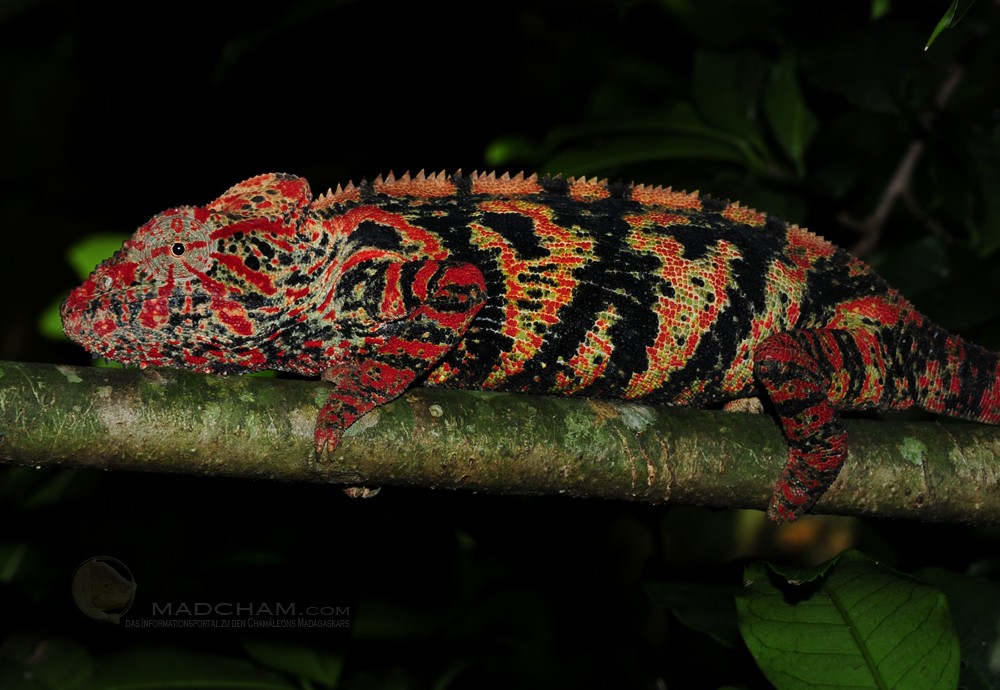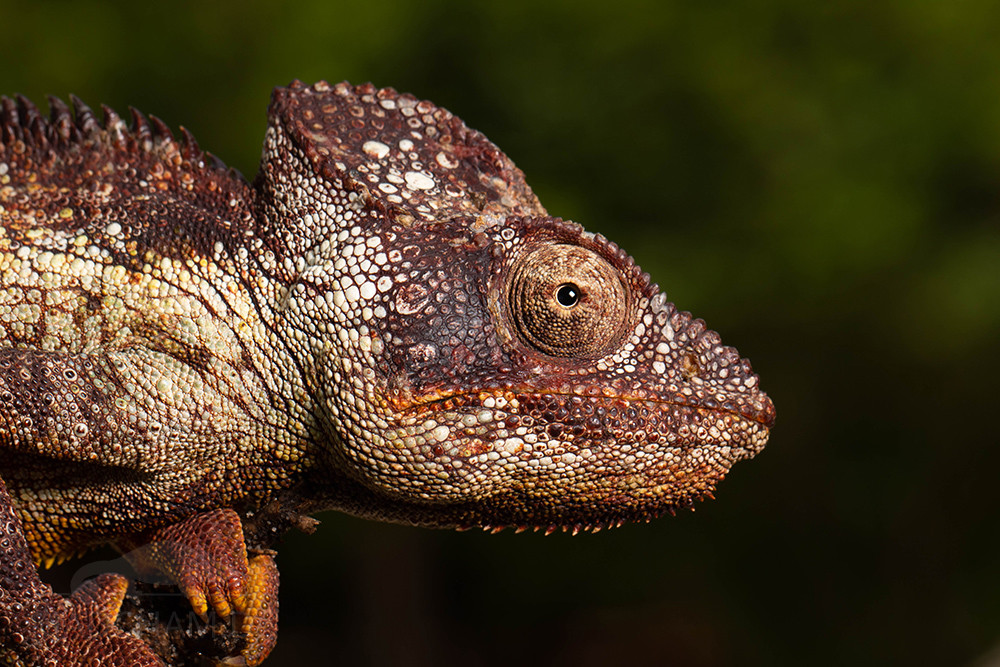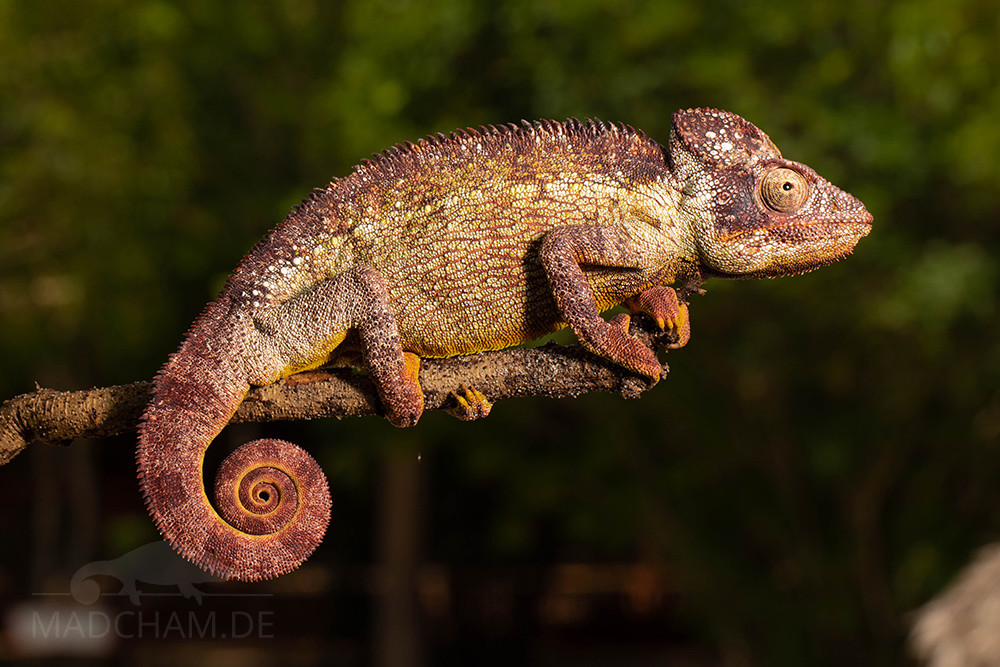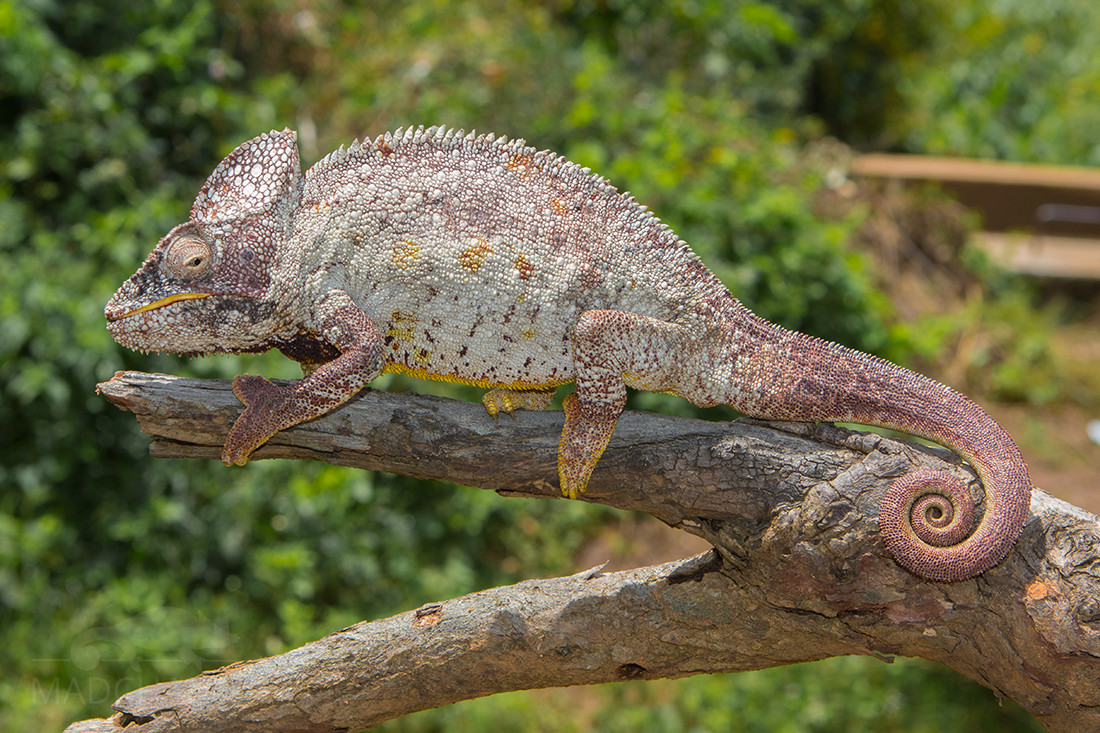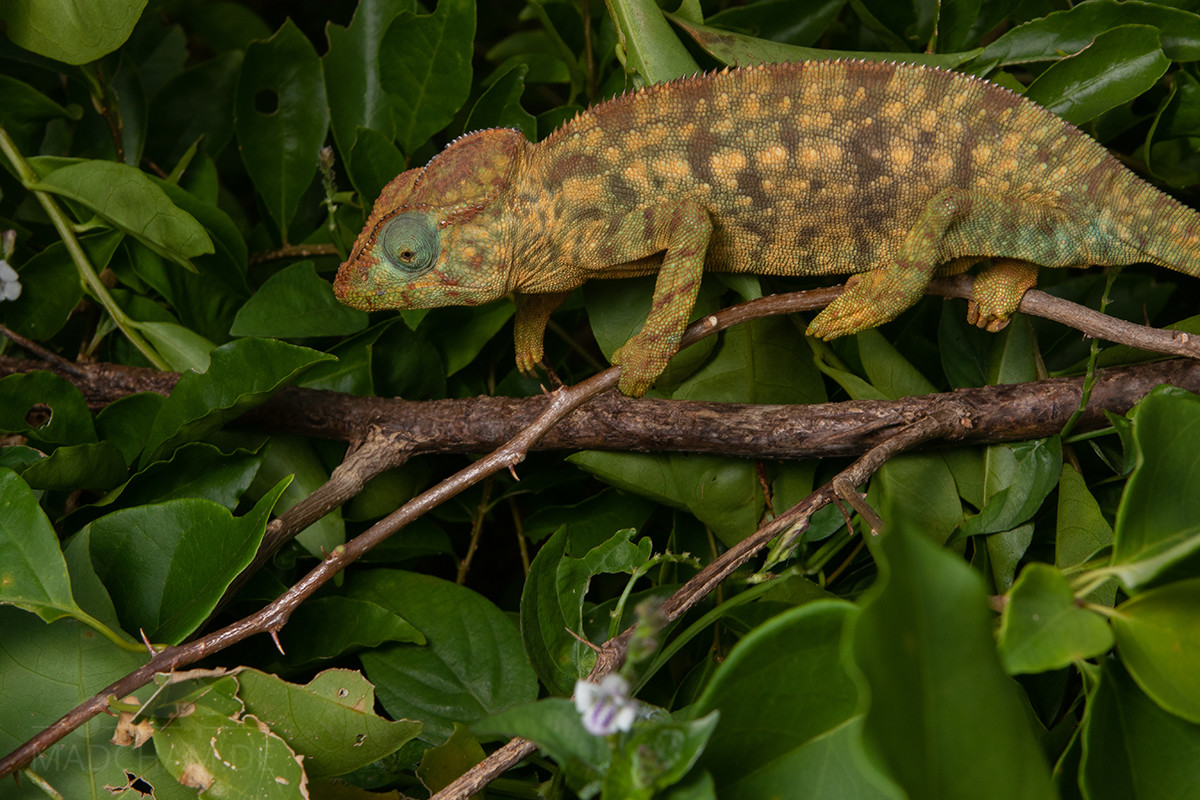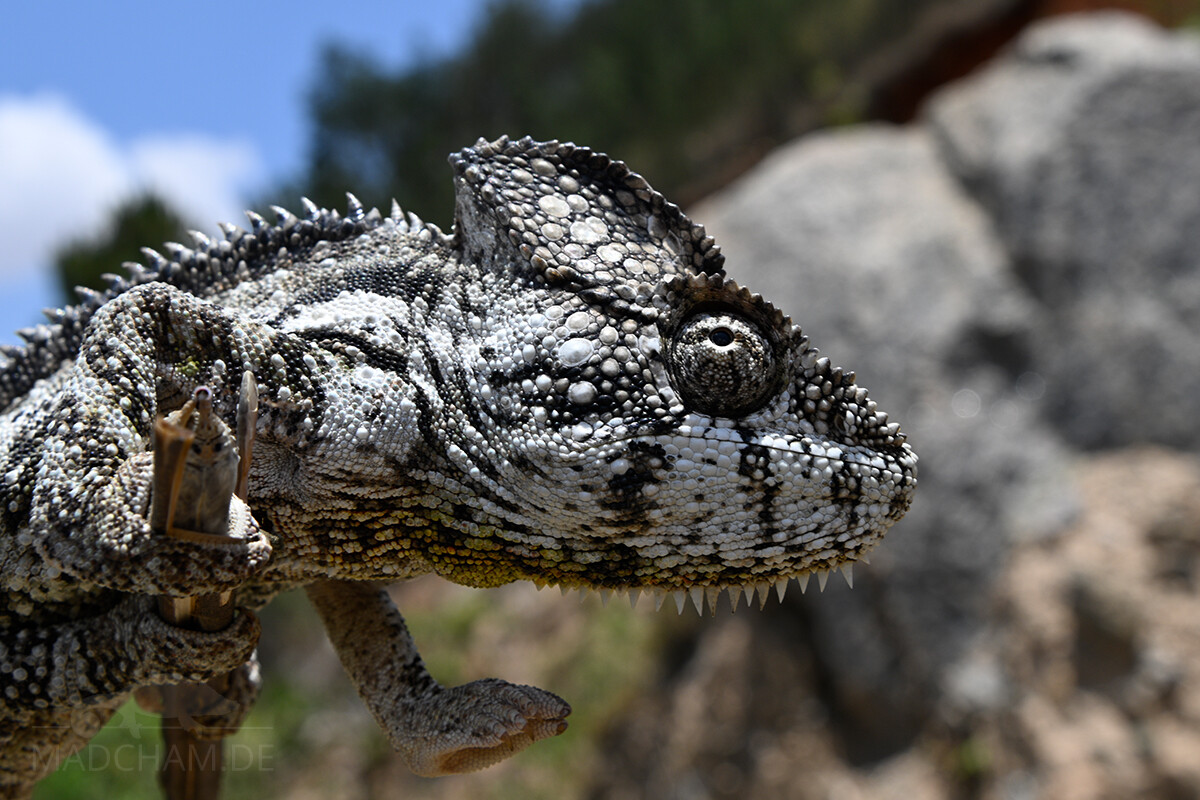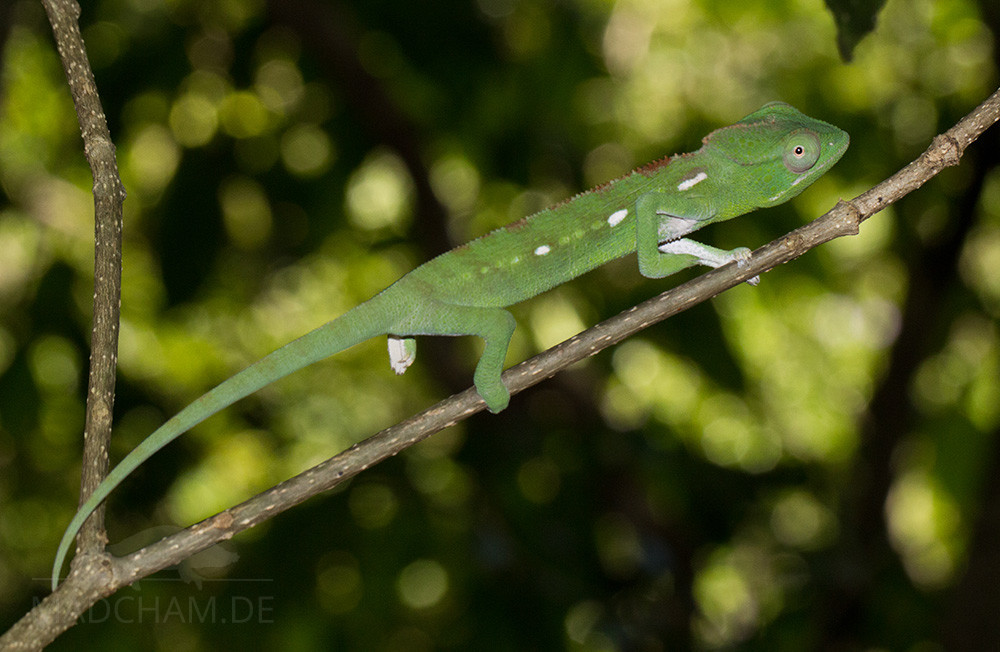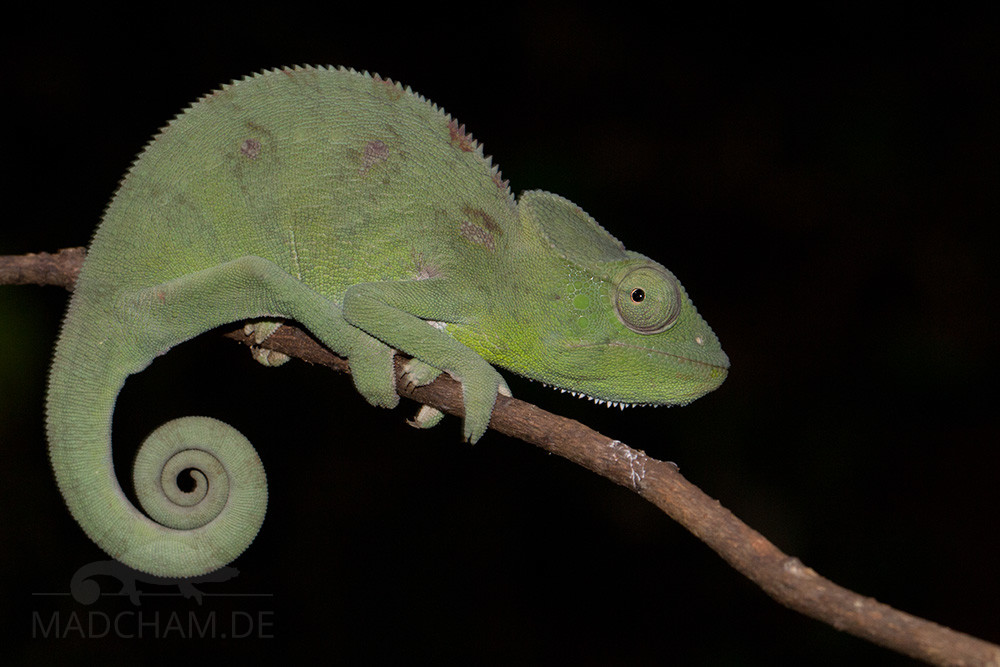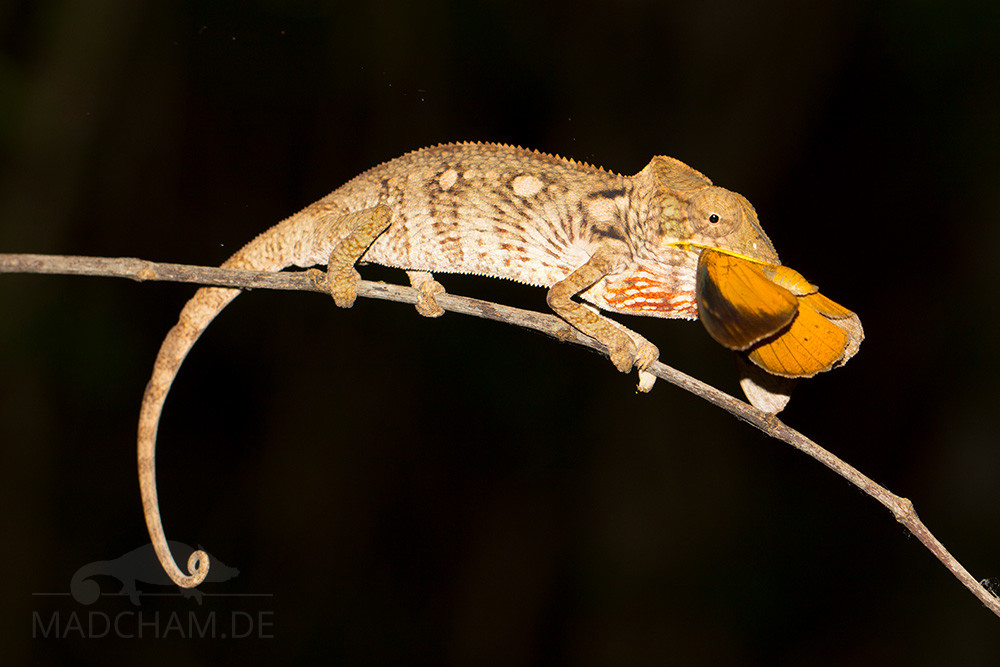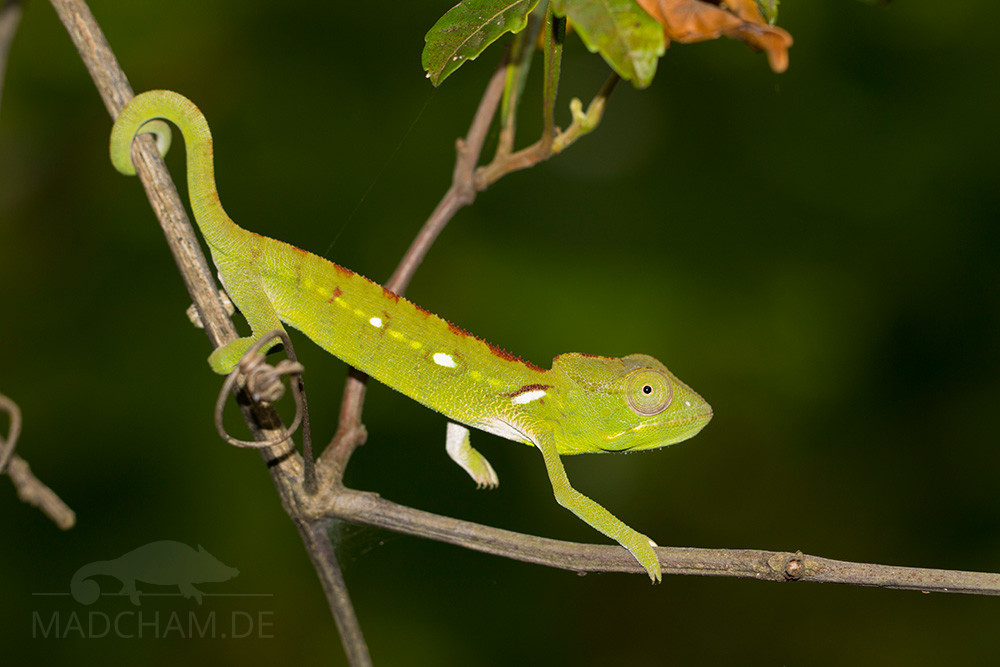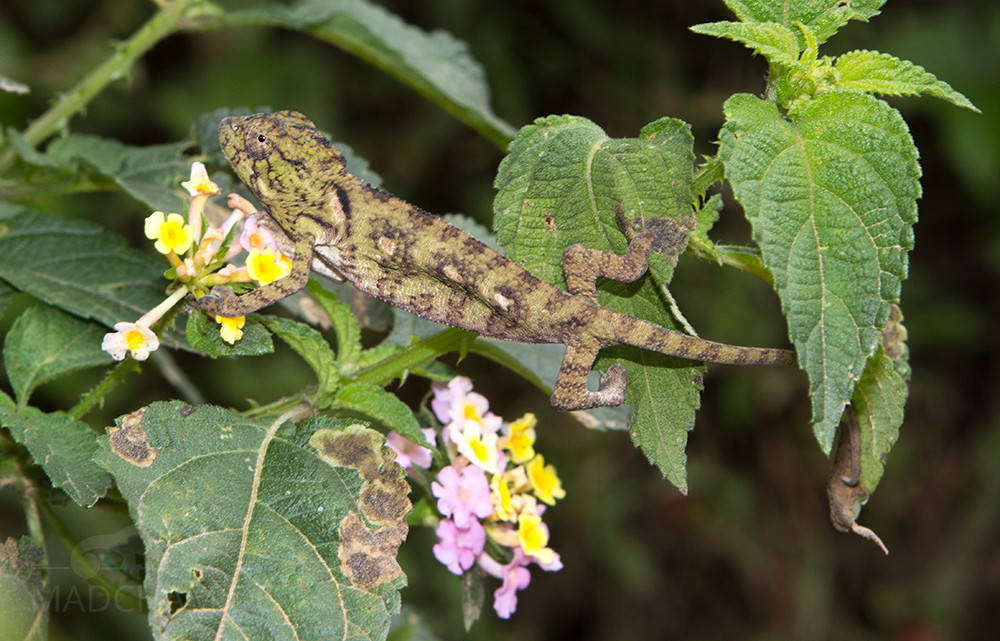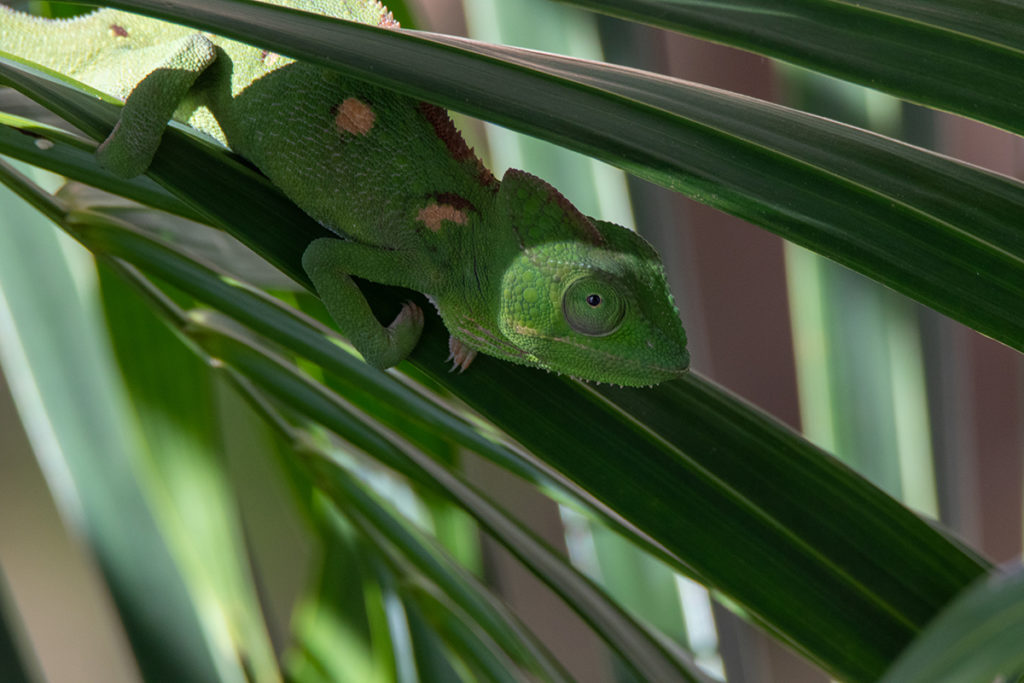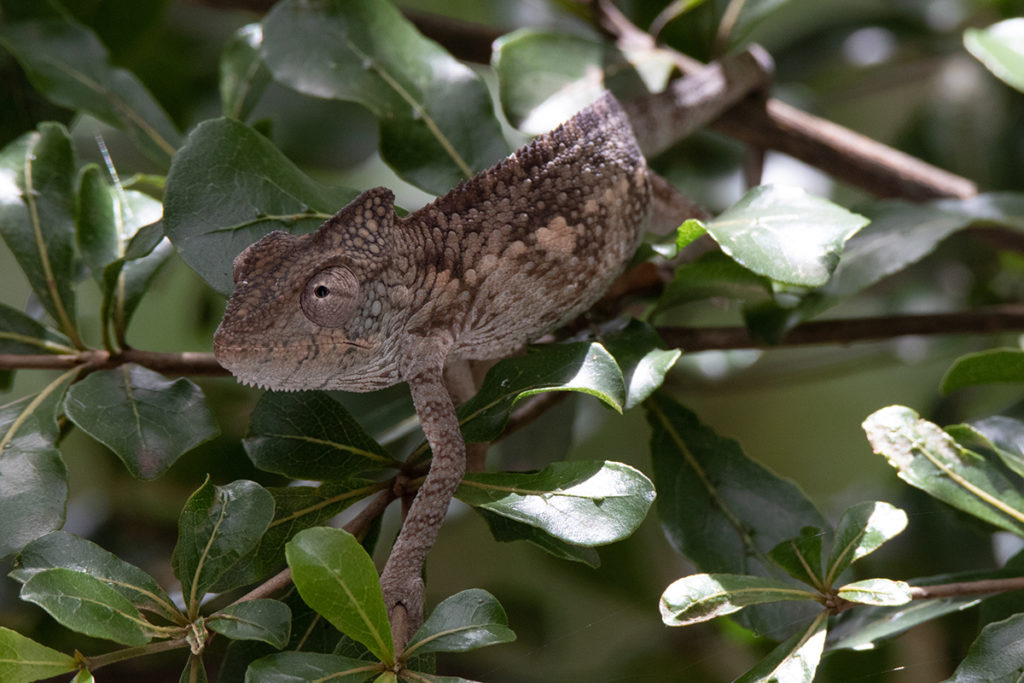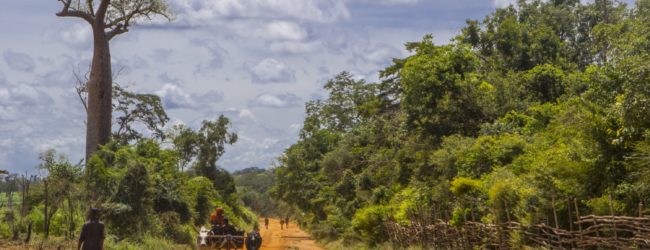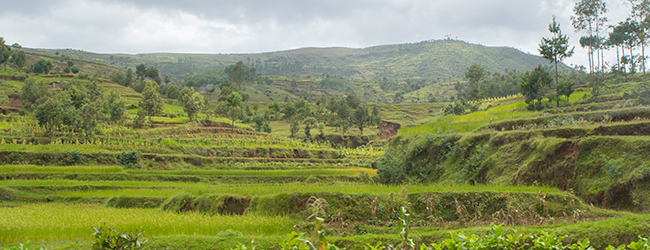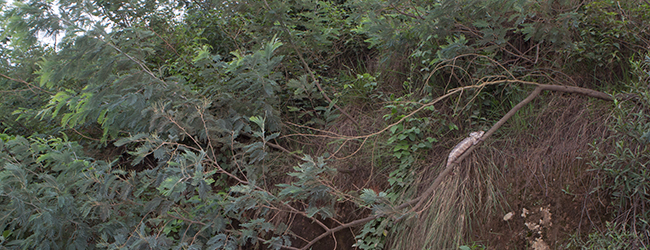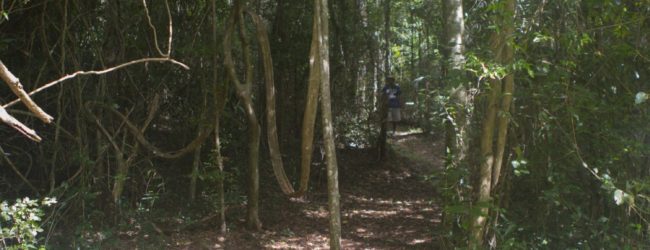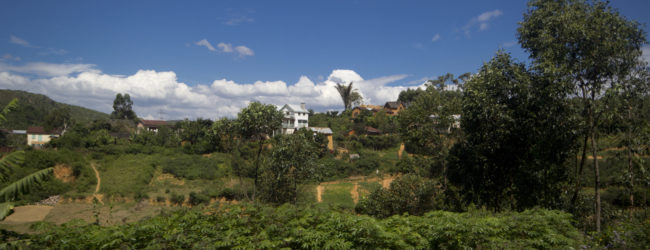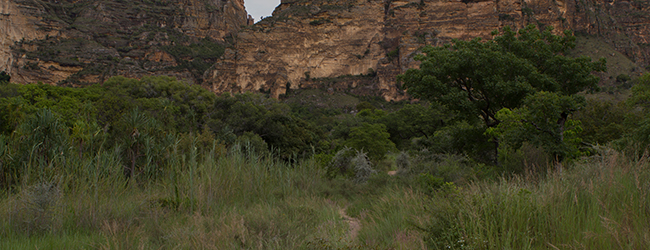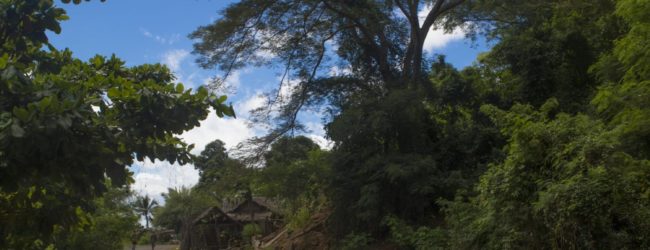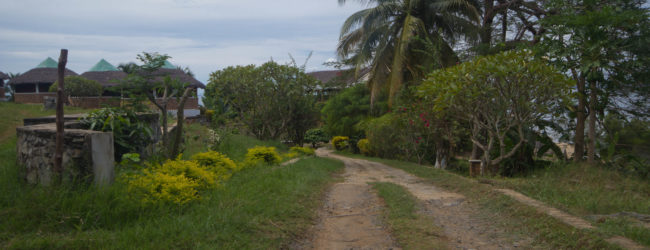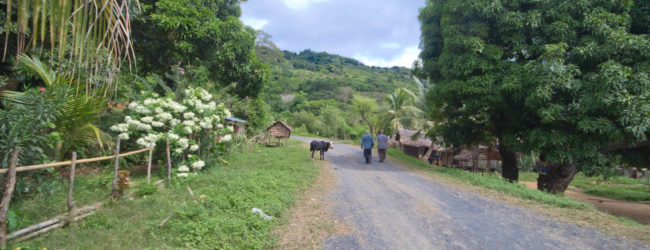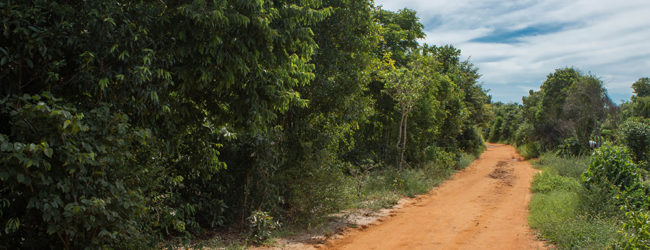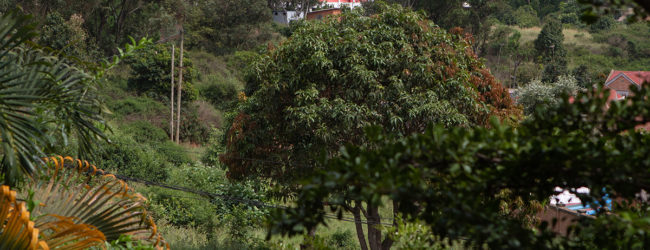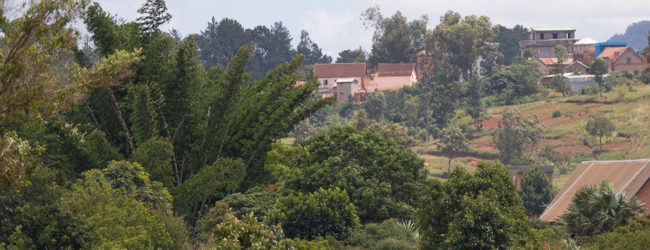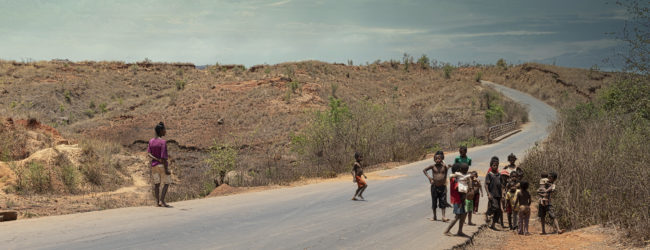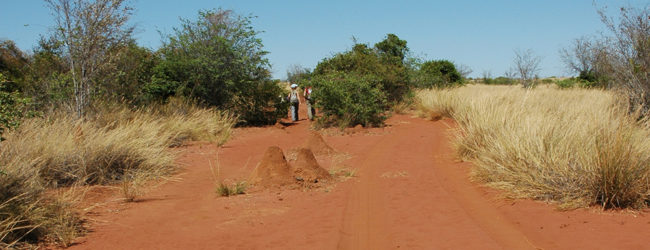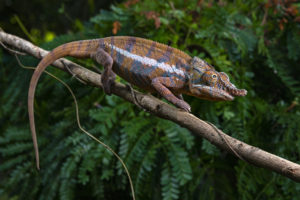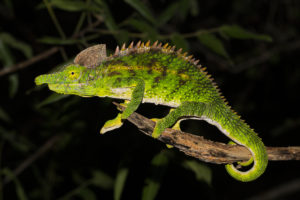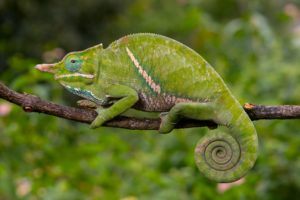2011-24 each 2000 specimens for legal export
First description:
Origin of the species name:
The zoologist François Mocquard of the Natural History Museum in Paris (France) received chameleons in the 1890s from M. Catat, the entomologist Charles Alluaud and Belly. He probably dedicated the new species to his colleague, the ornithologist Jean-Frédéric Émile Oustalet.
Distribution:
Furcifer oustaleti can be found almost all over Madagascar and is probably the most common chameleon of Madagascar. There are no preferred habitats, this species is enormously adaptable. We find individuals each year in the middle of dry forest, along the edges of national roads, in gardens of human settlements as well as close to rainforests or plantations. They seem to be able to get along with various living conditions and survive well in secondary vegetation. We have even seen Furcifer oustaleti individuals climbing on walls right in the middle of the inner city of Antananarivo and Antsirabe.
Appearance and size:
Furcifer oustaleti is among the largest chameleons of Madagascar, thus it is also called “Malagasy giant chameleon”. Total length in males reaches almost 70 cm, and females grow up to approximately 40 cm. The largest individuals we have seen – with really impressive sizes – live in southern and western Madagascar (Isalo and Zombitse-Vohibasia national park as well as Mahajanga). Males are mainly greyish or beige, at younger ages green colored and have a high, round casque. Females are variously colored and have a less developed casque. In this species, the females are more beautiful with red, green and yellow patterns as well as sometimes blue eyelids. Both genders lack parietal, lateral, gular and ventral crests.
Although we see numerous Furcifer oustaleti each year everywhere in Madagascar, we could never see differences in appearance that were linked to certain regions. Only in terms of color, you may observe that males in western Madagascar often have red-colored feet and an orange-colored belly. Additionally, specimens from the region around Ankaramibe often have a pinkish-red color similar to Furcifer pardalis and Furcifer viridis of the same area.
Reproduction:
The female lays about 20-40 eggs after about 40 days of gravidity towards the end of the rainy season. The highest known number of eggs in a single clutch for this species is 72 (proven in introduced Furcifer oustaleti populations in Florida, USA).
Good to know:
In captivity, this species has been kept for decades. But due to their relatively unspectacular colors combined with the impressive size, they are not enjoying great popularity.
Weight table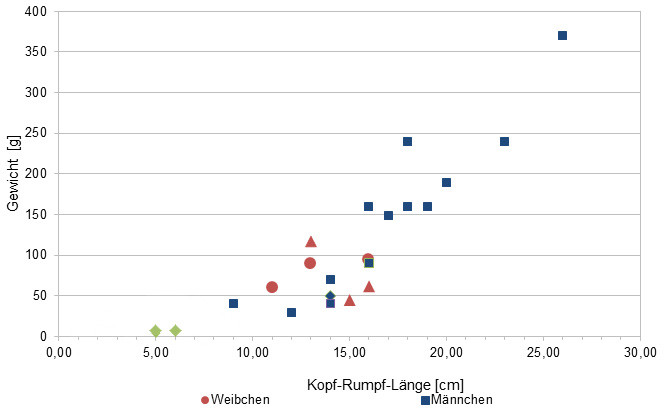
Gewicht = weight in grams, Kopf-Rumpf-Länge = snout-vent-length in cm, Jungtier = juvenile, Weibchen = female, Männchen = male
Since 2015, we measure the weights of chameleons that we find in Madagascar, of course only if practicable with calm animals (and working scales). Up to date, we have only a few weights. Over the long term, we want to get an average weight in proportion to the snout-vent-length (measured from the tip of the nose to the cloaca) from a large number of measurements for each Madagascan chameleon species. It is important to know that weights were all measured at the end of the rainy season when the chameleons have been having the highest food supply of the year. So our table may show the maximum weights of chameleons in Madagascar. Triangular symbols in females mean not pregnant, spherical symbols mean pregnant.
| Jan | Feb | Mar | Apr | May | Jun | Jul | Aug | Sep | Oct | Nov | Dec | |
| Average temperature | 21 | 22 | 20 | 19 | 17 | 15 | 14 | 15 | 16 | 19 | 20 | 20 |
| Minimum temperature | 17 | 17 | 16 | 15 | 12 | 10 | 10 | 10 | 11 | 13 | 15 | 16 |
| Maximum temperatur | 26 | 27 | 26 | 25 | 23 | 21 | 20 | 21 | 24 | 26 | 27 | 26 |
| Rain days | 26 | 23 | 25 | 19 | 17 | 18 | 21 | 21 | 16 | 17 | 20 | 24 |
We have collected the data given above over several years with thermometers and hygrometers at the finding places of the chameleons. "Average temperature" means that values of a whole month have been calculated to one average value per month. For example all measured minimum temperature values of February have been calculated to one average minimum temperature for February. In plain language, this means single peak values of a day may be a little higher or lower than the average minimum and maximum temperatures. It is possible that a location has an average maximum temperature of 29°C, but one day during that month it had 33°C or even 35°C there.
Ambositra is located in Madagascar's central highlands at heights of about 860 meters above sea level. Accordingly, the climate here is much cooler than climate on the coast or in the south of the island. Ambositra is said to be one of the coldest cities in Madagascar.
During the rainy season, this region reaches the highest temperatures around 25°C, sunny places may sometimes even almost reach 30°C for short. In the night, the temperature drops down to 15°C. It is raining almost every day. It's not before the dry season starts in April that precipitation declines a little. But it will not become completely "dry" here - even during the dry season, it is raining at least every second day. The dry season has even colder nights with drops to 10°C and less in some single nights. During the daytime, Ambositra only sometimes reaches 20° and more in the dry season.
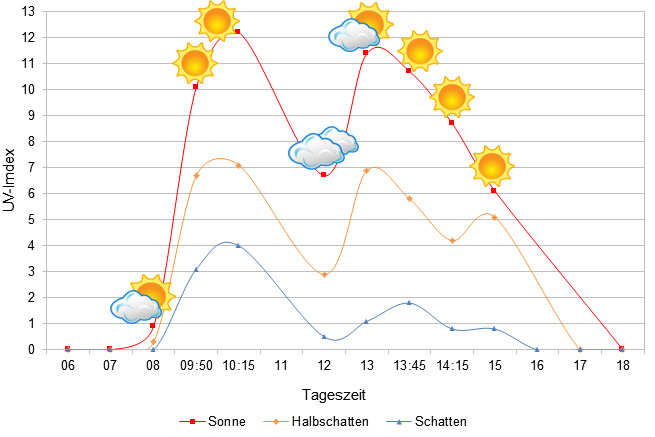
We have measured UVB data with a Solarmeter 6.5 in spring (end of March) at the peak of activity of chameleons in Madagascar. We always measured the values that a chameleon could maximally reach in its habitat.
| Jan | Feb | Mar | Apr | May | Jun | Jul | Aug | Sep | Oct | Nov | Dec | |
| Average temperature | 25 | 25 | 25 | 24 | 23 | 22 | 21 | 21 | 22 | 23 | 24 | 25 |
| Minimum temperature | 21 | 21 | 21 | 20 | 20 | 17 | 17 | 16 | 17 | 18 | 20 | 20 |
| Maximum temperature | 29 | 29 | 29 | 29 | 28 | 26 | 26 | 26 | 27 | 28 | 28 | 29 |
| Rain days | 26 | 24 | 23 | 17 | 14 | 14 | 16 | 17 | 13 | 15 | 18 | 23 |
We have collected the data given above over several years with thermometers and hygrometers at the finding places of the chameleons. "Average temperature" means that values of a whole month have been calculated to one average value per month. For example all measured minimum temperature values of February have been calculated to one average minimum temperature for February. In plain language, this means single peak values of a day may be a little higher or lower than the average minimum and maximum temperatures. It is possible that a location has an average maximum temperature of 29°C, but one day during that month it had 33°C or even 35°C there.
Climate in Ambilobe is warm all year long with steady temperatures around 25°C. In rainy season, it is a little warmer and temperatures usually raise above 30°C. Temperature at night is slight. Additionally, with daily precipitatin from October to April, humidity raises and makes the climate prone to thunderstorms, especially in spring.
Between April and October it is dry season in Amiblobe, but in contrast to many other parts of Madagascar, you won't notice the difference to the rainy season so much. Days are a little less warm and night drops can fall to 16-17°C. But precipitation is still regular, so the area remains green throughout the whole year.
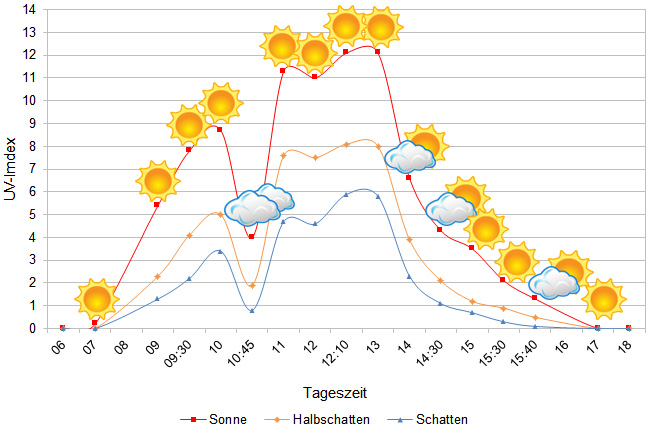
We have measured UVB data with a Solarmeter 6.5 in spring (beginning of April) at the peak of activity of chameleons in Madagascar. We always measured the values that a chameleon could maximally reach in its habitat.
| Jan | Feb | Mar | Apr | May | Jun | Jul | Aug | Sep | Oct | Nov | Dec | |
| Average temperature | 26 | 26 | 26 | 25 | 24 | 22 | 21 | 21 | 22 | 23 | 25 | 26 |
| Minimum temperature | 22 | 23 | 21 | 19 | 17 | 17 | 17 | 17 | 18 | 19 | 21 | 22 |
| Maximum temperature | 30 | 30 | 30 | 29 | 28 | 26 | 25 | 27 | 26 | 27 | 29 | 30 |
| Rain days | 20 | 19 | 20 | 15 | 14 | 13 | 16 | 15 | 13 | 13 | 15 | 19 |
We have collected the data given above over several years with thermometers and hygrometers at the finding places of the chameleons. "Average temperature" means that values of a whole month have been calculated to one average value per month. For example all measured minimum temperature values of February have been calculated to one average minimum temperature for February. In plain language, this means single peak values of a day may be a little higher or lower than the average minimum and maximum temperatures. It is possible that a location has an average maximum temperature of 29°C, but one day during that month it had 33°C or even 35°C there.
Two examples of a daily course of temperatures in the rainy season can be found below. Both were recorded with data loggers in 2023.
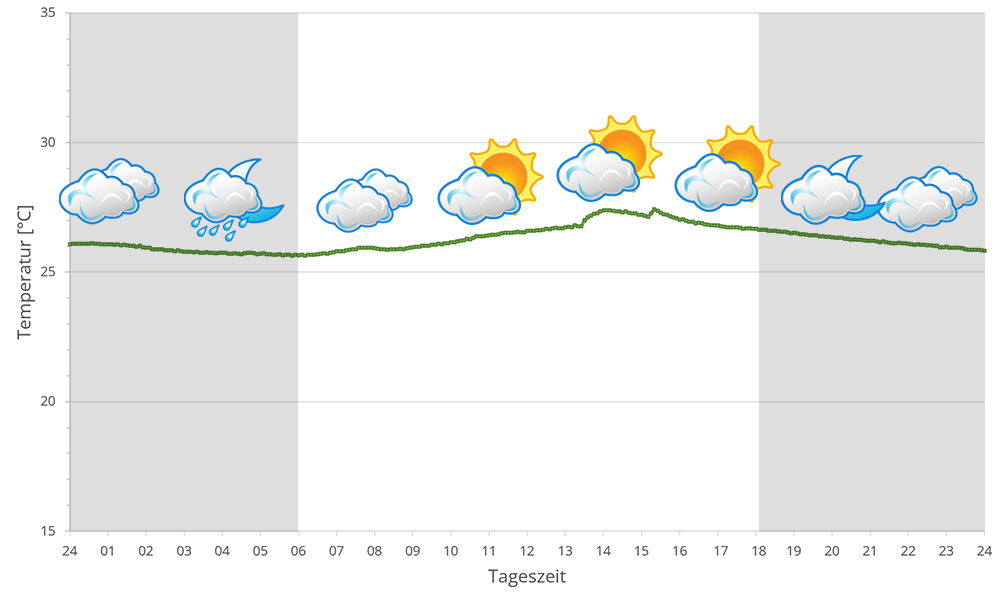
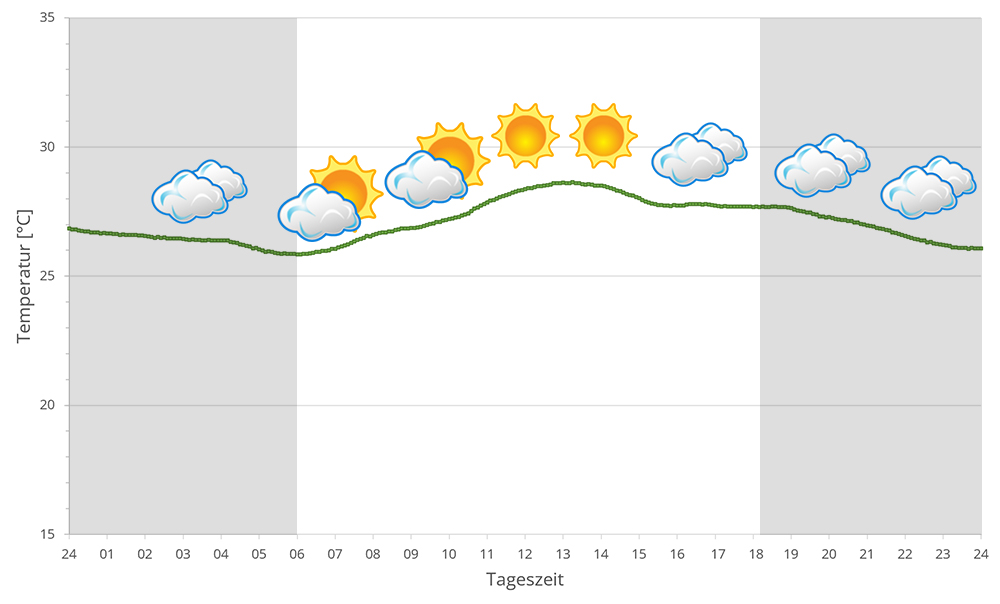
The climate at Lake Ampitabe and in Manambato is warm all year round, and the nearby Indian Ocean usually brings a light breeze. This makes it a popular place for travelers to relax - it never gets cold here. During the day temperatures can easily exceed 30°C, in the dry season from April to October they are slightly lower.
At night the temperatures cool down a bit. But the night temperature never goes far below 20°C. During the whole year, there is a moderate amount of rainfall, so that the rain forest remains continuously green. In 2023 we used data loggers to measure relative humidity on different days around Lake Ampitabe during the rainy season, the data can be found below.
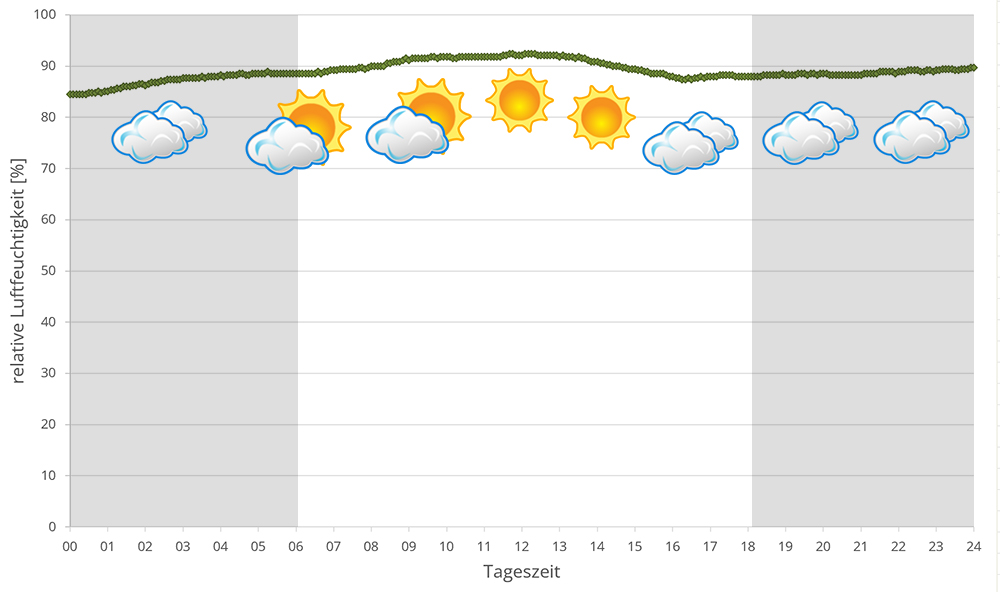
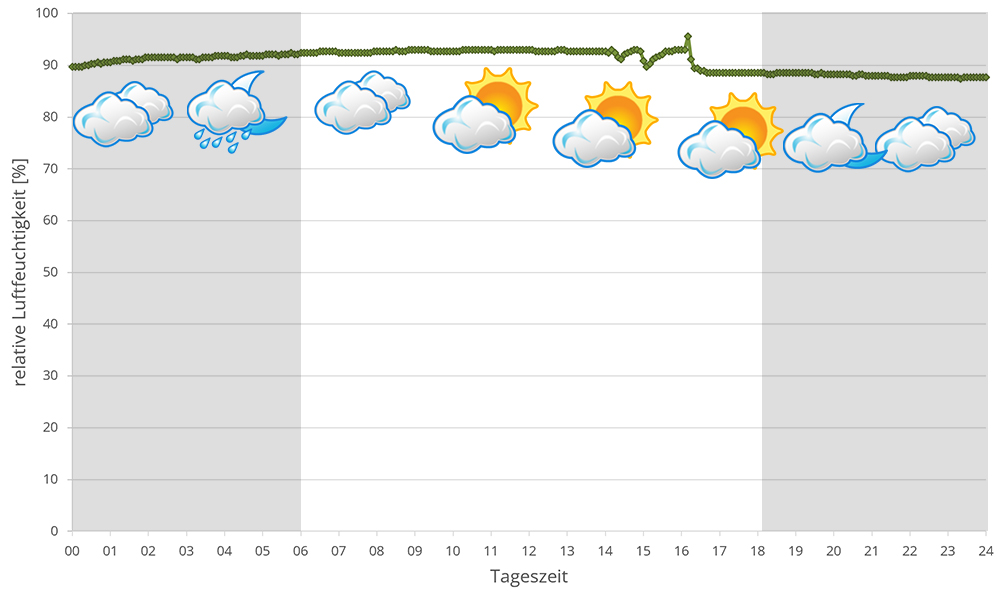
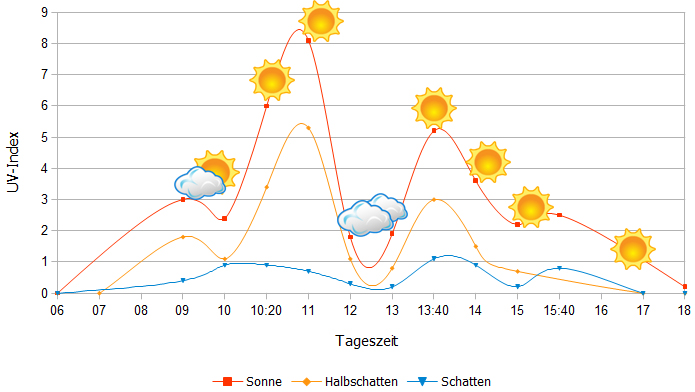 Tageszeit = day time, Sonne = sun, Halbschatten = half shade, Schatten = shade
Tageszeit = day time, Sonne = sun, Halbschatten = half shade, Schatten = shade
We have measured UVB data with a Solarmeter 6.5 in spring (beginning of April) at the peak of activity of chameleons in Madagascar. We always measured the values that a chameleon could maximally reach in its habitat.
In 2023, in addition to other climate data, we also measured the air pressure at the locations we visited in Madagascar. The following data is from different days during the rainy season around Lake Ampitabe. On the X-axis is the time of day or night. In Madagascar, the day begins around 6 am, and night falls at 6 pm. The Y axis shows the atmospheric pressure in hPa.
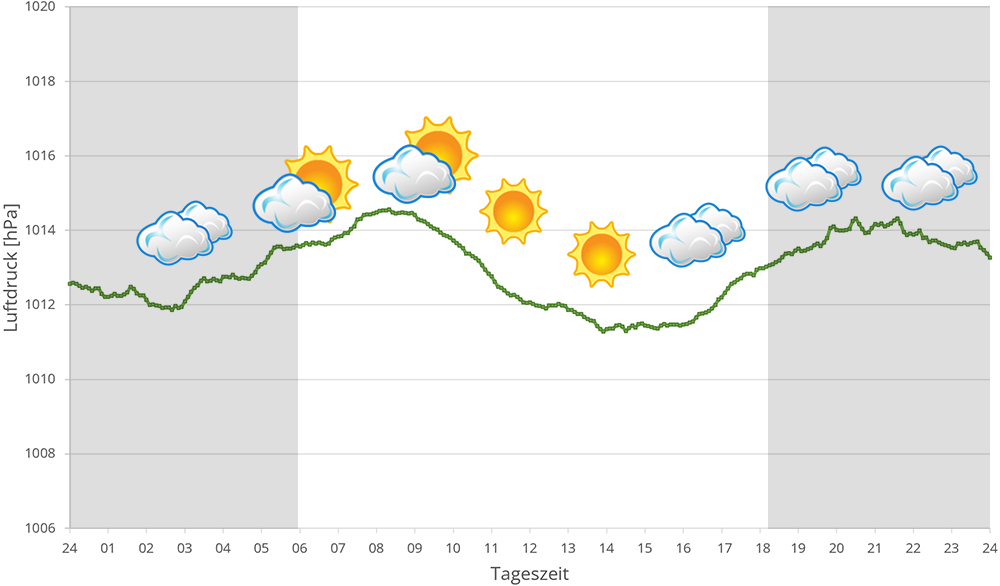
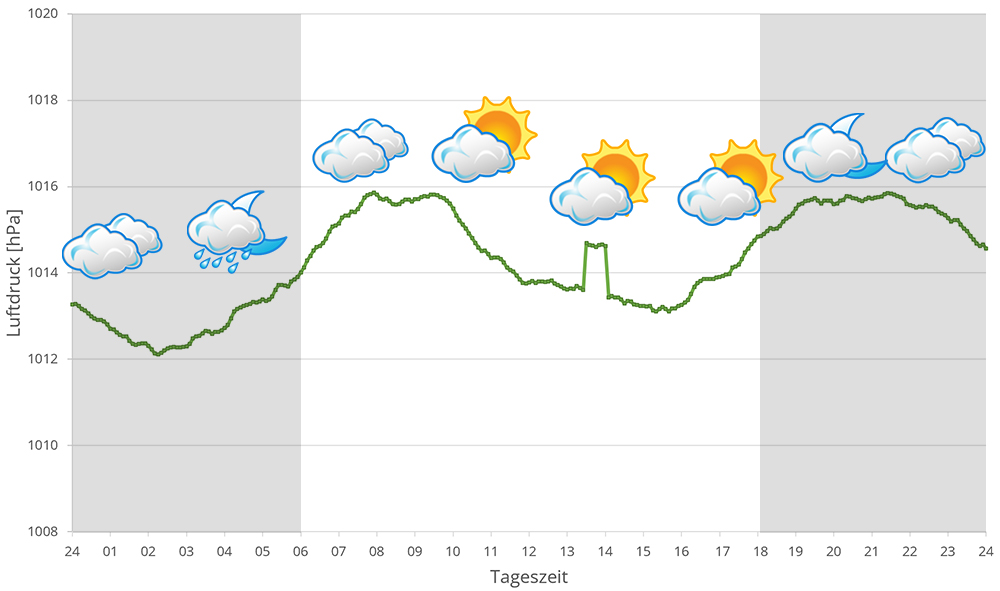
| Jan | Feb | Mar | Apr | May | Jun | Jul | Aug | Sep | Oct | Nov | Dec | |
| Average temperature | 28 | 28 | 28 | 28 | 25 | 23 | 23 | 24 | 26 | 28 | 29 | 28 |
| Minimum temperature | 23 | 22 | 23 | 22 | 18 | 16 | 15 | 16 | 19 | 21 | 22 | 23 |
| Maximum temperature | 33 | 33 | 33 | 33 | 33 | 31 | 31 | 32 | 33 | 35 | 35 | 34 |
| Rain days | 16 | 12 | 6 | 1 | 1 | 0 | 0 | 0 | 1 | 1 | 2 | 9 |
We have collected the data given above over several years with thermometers and hygrometers at the finding places of the chameleons. "Average temperature" means that values of a whole month have been calculated to one average value per month. For example all measured minimum temperature values of February have been calculated to one average minimum temperature for February. In plain language, this means single peak values of a day may be a little higher or lower than the average minimum and maximum temperatures. It is possible that a location has an average maximum temperature of 29°C, but one day during that month it had 33°C or even 35°C there.
Climate in Kirindy is mainly one thing: Hot. During dry season from April until September, it rarely rains and if, very short. The dry forest loses its leaves and few green survives. During daytime, it becomes extremely hot, but at night temperature drops massively, sometimes even below 15°C. This extreme temperature drop at night is typical for the area in dry season.
During rainy season from October until March, the forest blooms: It is raining several times a day, trees and plants begin to sprout. Everything becomes green and vivid. Humidity is accordingly high. During daytime, rainy season is even warmer than dry seasin. But at night, temperature drops only few degrees in rainy season.
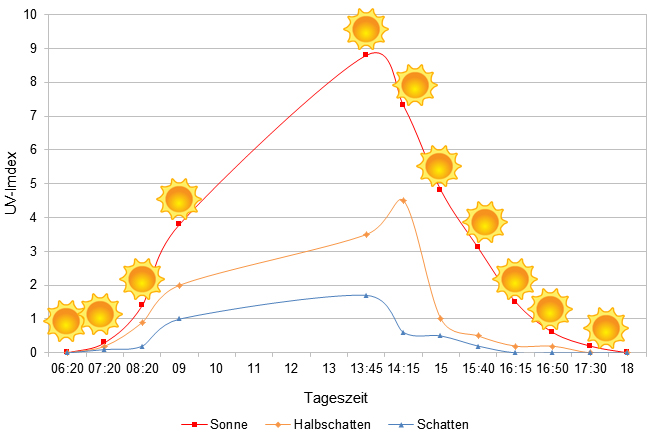
We have measured UVB data with a Solarmeter 6.5 in spring (beginning of April) at the peak of activity of chameleons in Madagascar. We always measured the values that a chameleon could maximally reach in its habitat.
| Jan | Feb | Mar | Apr | May | Jun | Jul | Aug | Sep | Oct | Nov | Dec | |
| Average temperature | 27 | 27 | 26 | 25 | 23 | 21 | 20 | 21 | 22 | 23 | 25 | 26 |
| Minimum temperature | 22 | 22 | 21 | 20 | 17 | 14 | 14 | 15 | 16 | 18 | 20 | 22 |
| Maximum temperature | 32 | 32 | 32 | 30 | 28 | 26 | 26 | 27 | 28 | 29 | 30 | 31 |
| Rain days | 13 | 12 | 7 | 5 | 4 | 4 | 3 | 3 | 3 | 4 | 7 | 12 |
We have collected the data given above over several years with thermometers and hygrometers at the finding places of the chameleons. "Average temperature" means that values of a whole month have been calculated to one average value per month. For example all measured minimum temperature values of February have been calculated to one average minimum temperature for February. In plain language, this means single peak values of a day may be a little higher or lower than the average minimum and maximum temperatures. It is possible that a location has an average maximum temperature of 29°C, but one day during that month it had 33°C or even 35°C there.
Climate in Toliara (Tuléar) and surroundings is mainly one thing: Hot. In rainy season, daily temperatures rise easily to more than 30°C. In sunny places, it may even get 45°C. This is the location to look for every shady place you can get. And although it is called "rainy" season, precipitation in the south is lean. In good years, it is raining every couple of days from November to February. In worse years, it is raining even less.
During dry season, temperatures drop a little, but it remains very warm. In the night, temperatuers in July and August may drop even to 15°C, but days reach temperatures over 25°C without a problem. This large temperature drop is typical for the area. The dry season has only shot and very few rainfall.
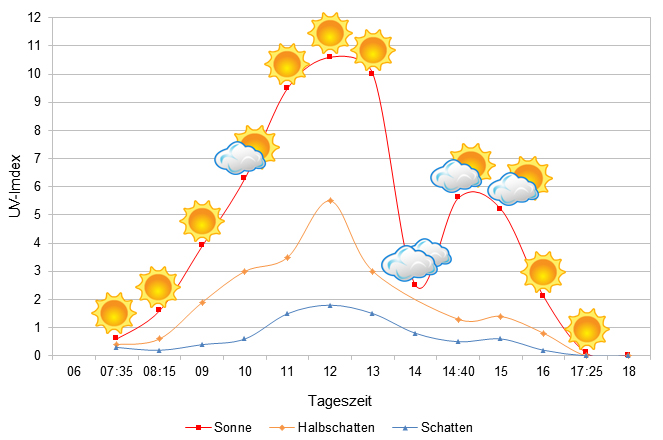
We have measured UVB data with a Solarmeter 6.5 in spring (end of March) at the peak of activity of chameleons in Madagascar. We always measured the values that a chameleon could maximally reach in its habitat.
Habitat:
No habitat is as diverse as Furcifer oustaleti’s. This species is adapted to the arid, hot climate of the southern and western dry forests of Madagascar as well as the humid secondary vegetation of the northwest. The only habitat where we haven’t found this species yet is intact highland rainforest. Even inside the capital Antananarivo, Furcifer oustaleti lives in wild gardens. Fruit trees, palms, coffee trees or bananas, sand or soil, clay, and laterite – you will always find this species. Even savanna-like areas and shrubs close to ricefields can be their home. The following pictures show habitats close to Kirindy, in the central highlands around Antananarivo and Mandraka as well as in Ankarafantsika, Isalo, Mahajanga, and Ankify.

